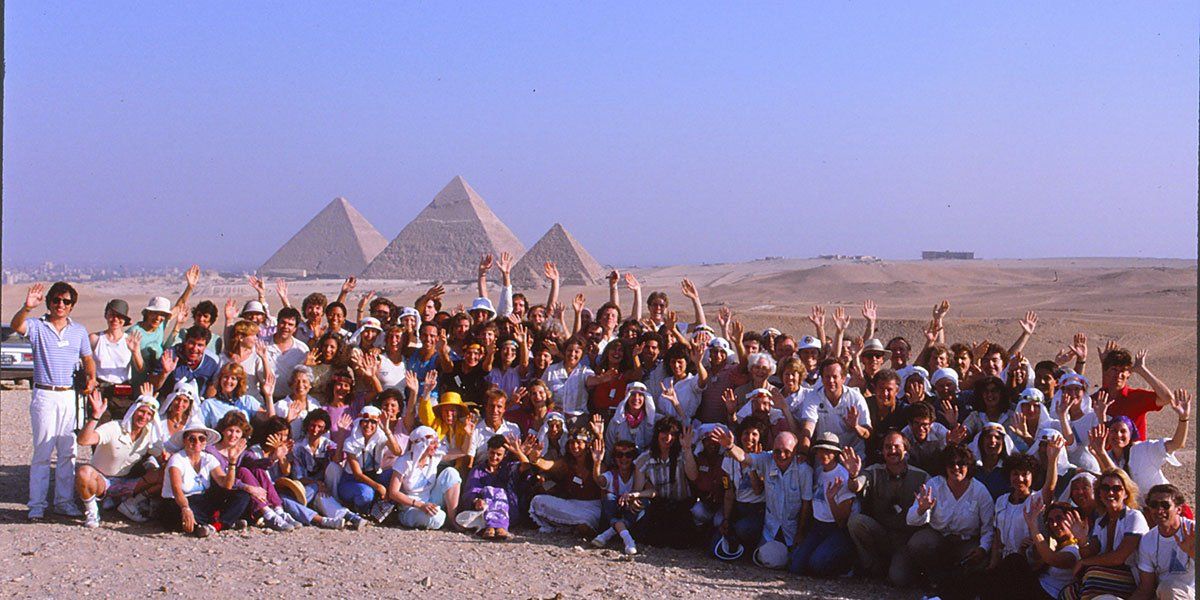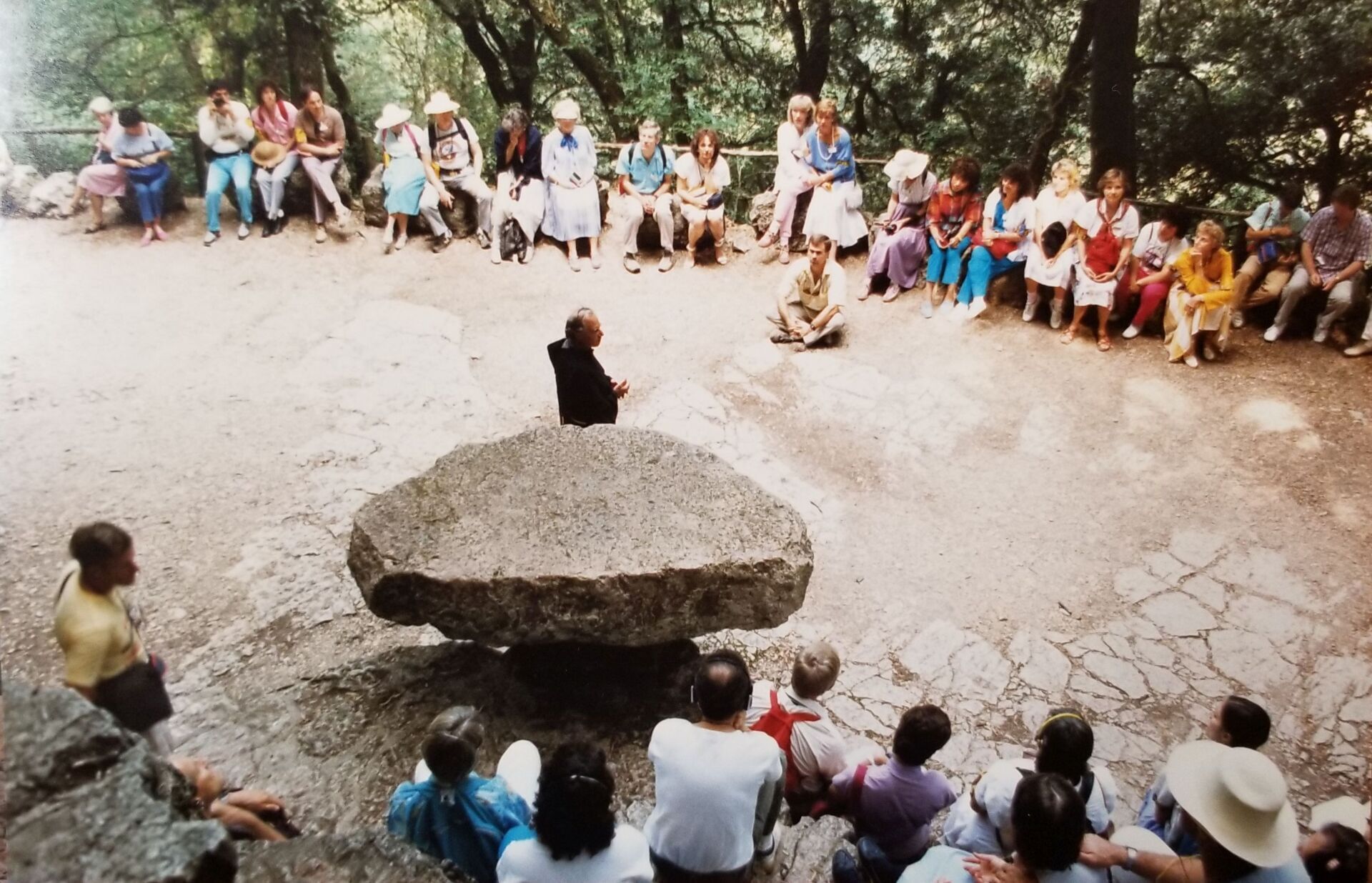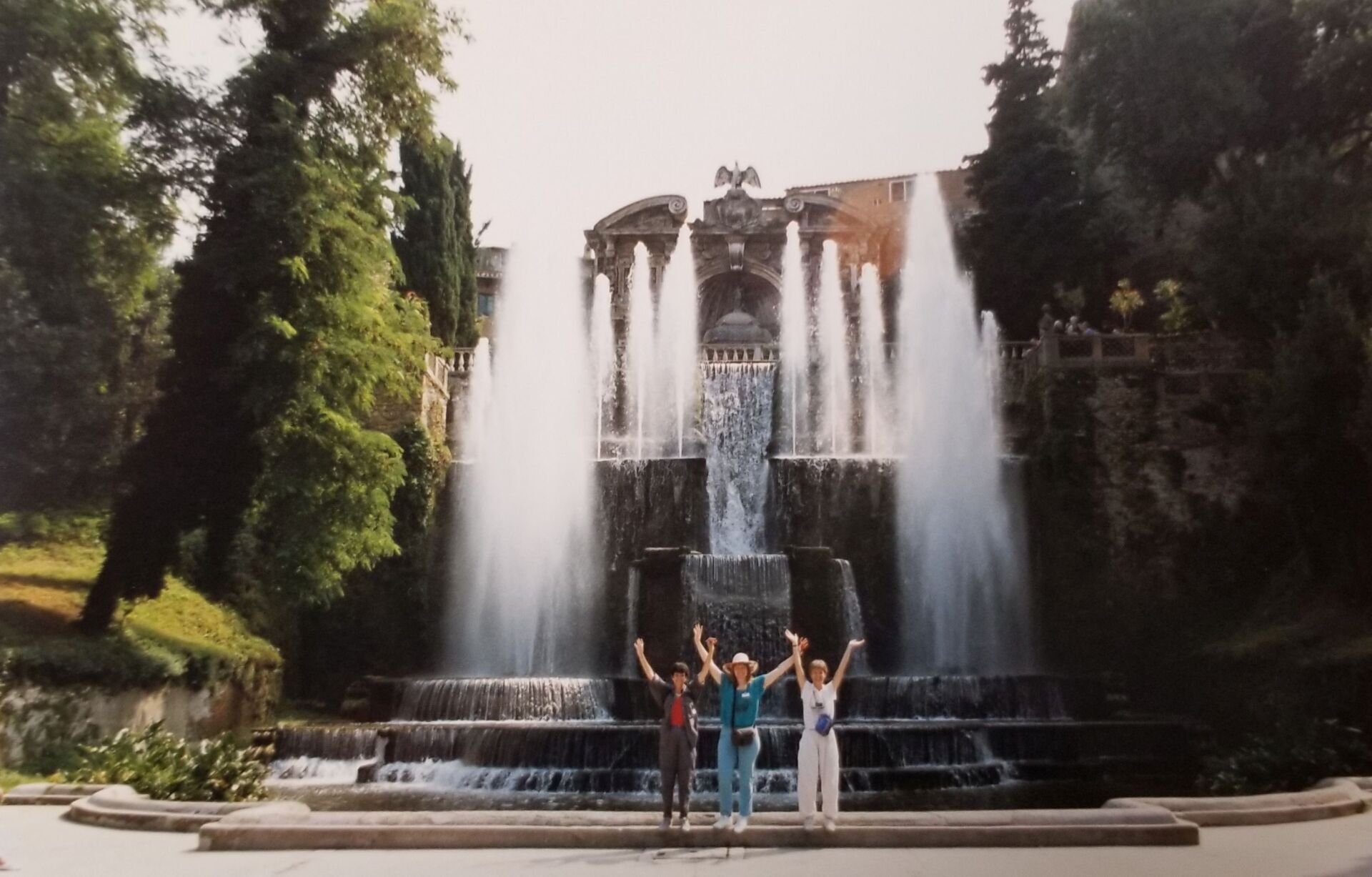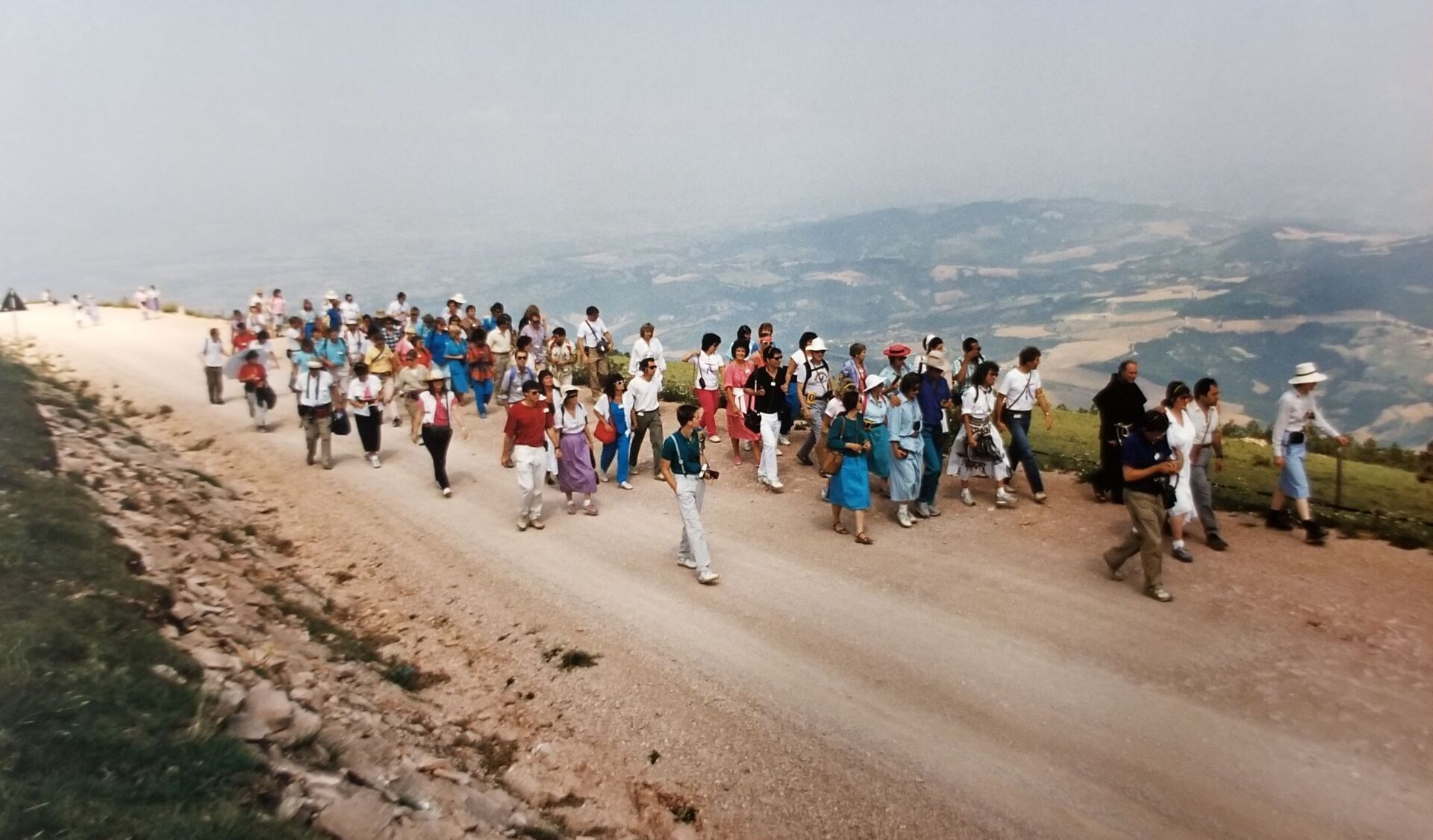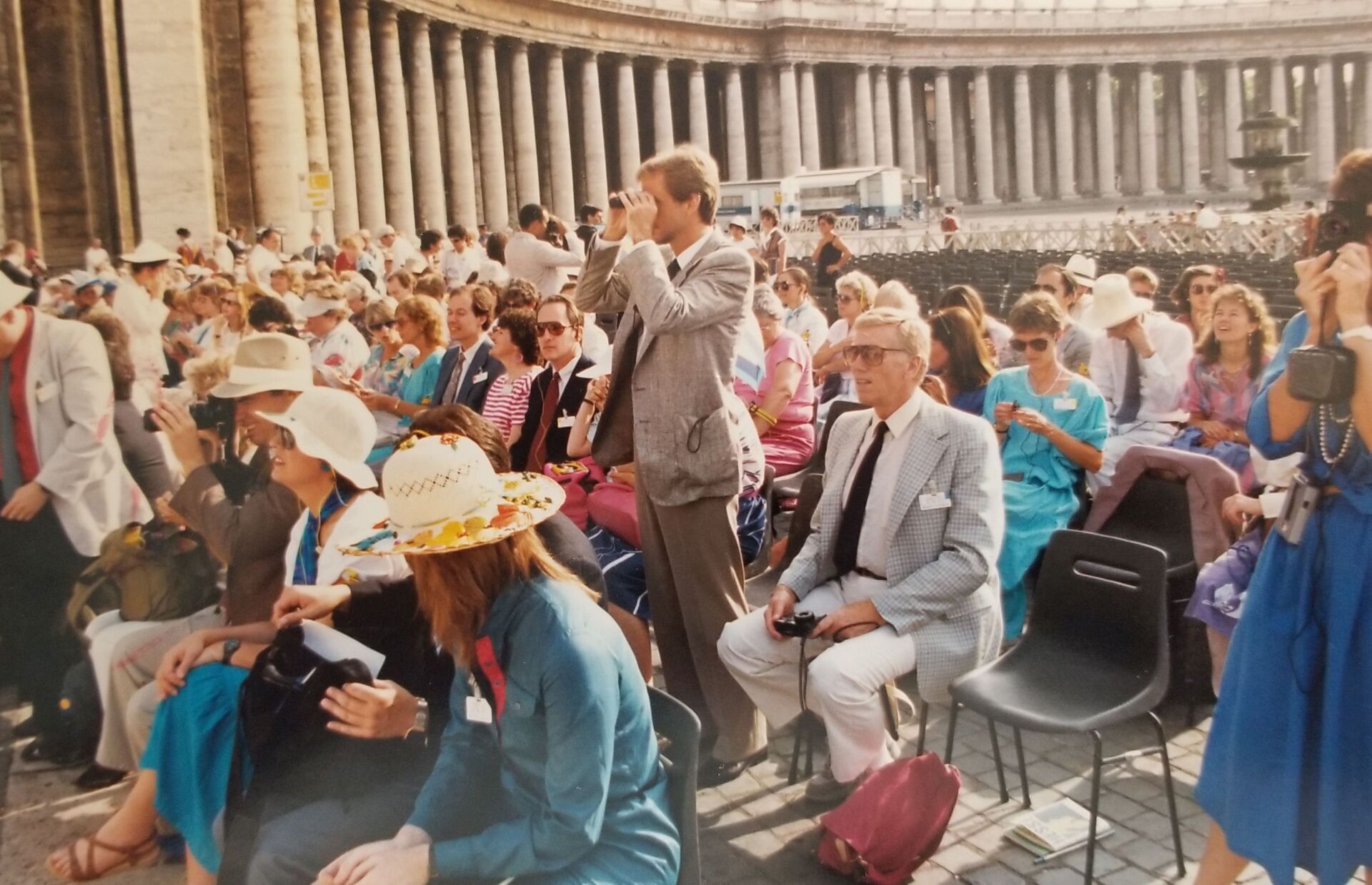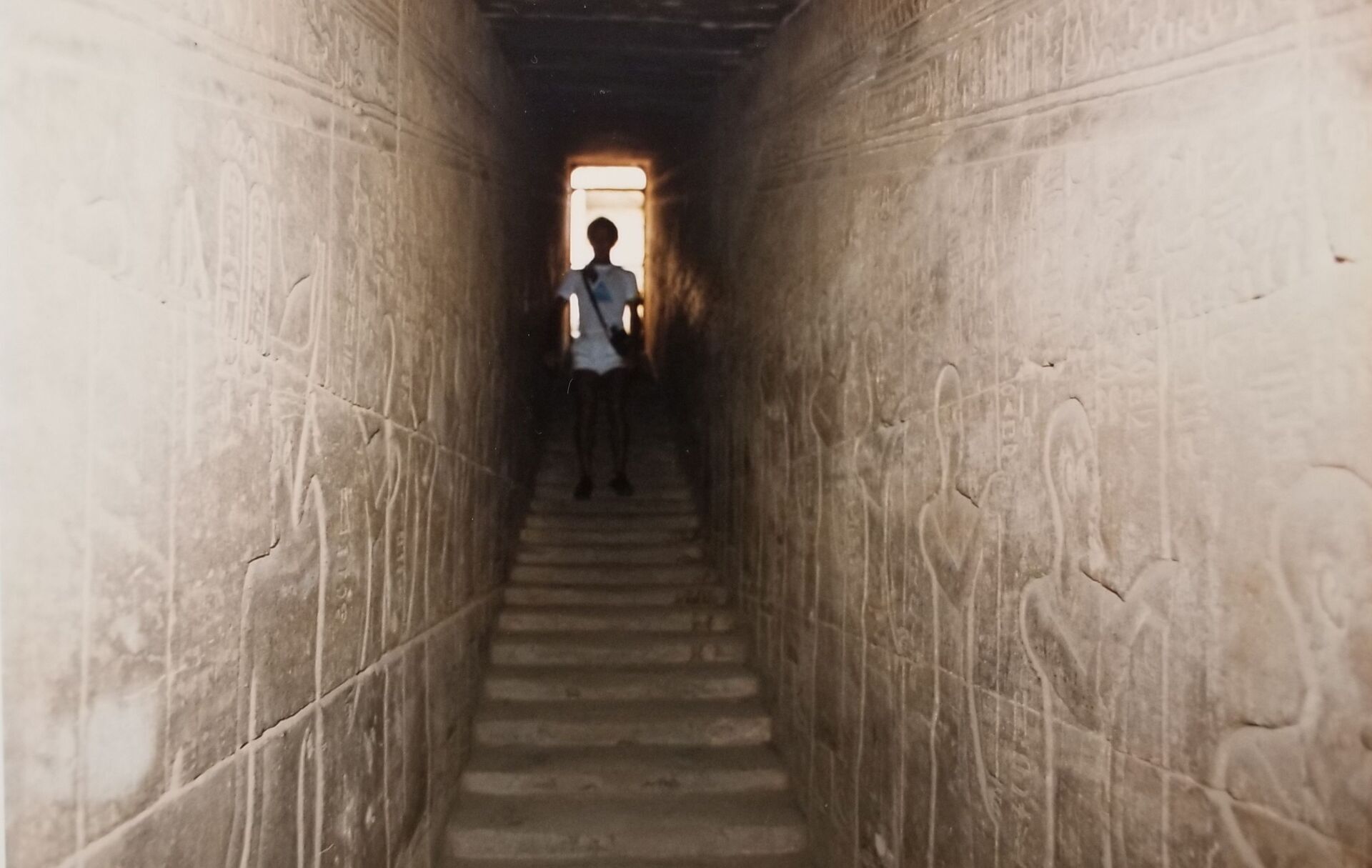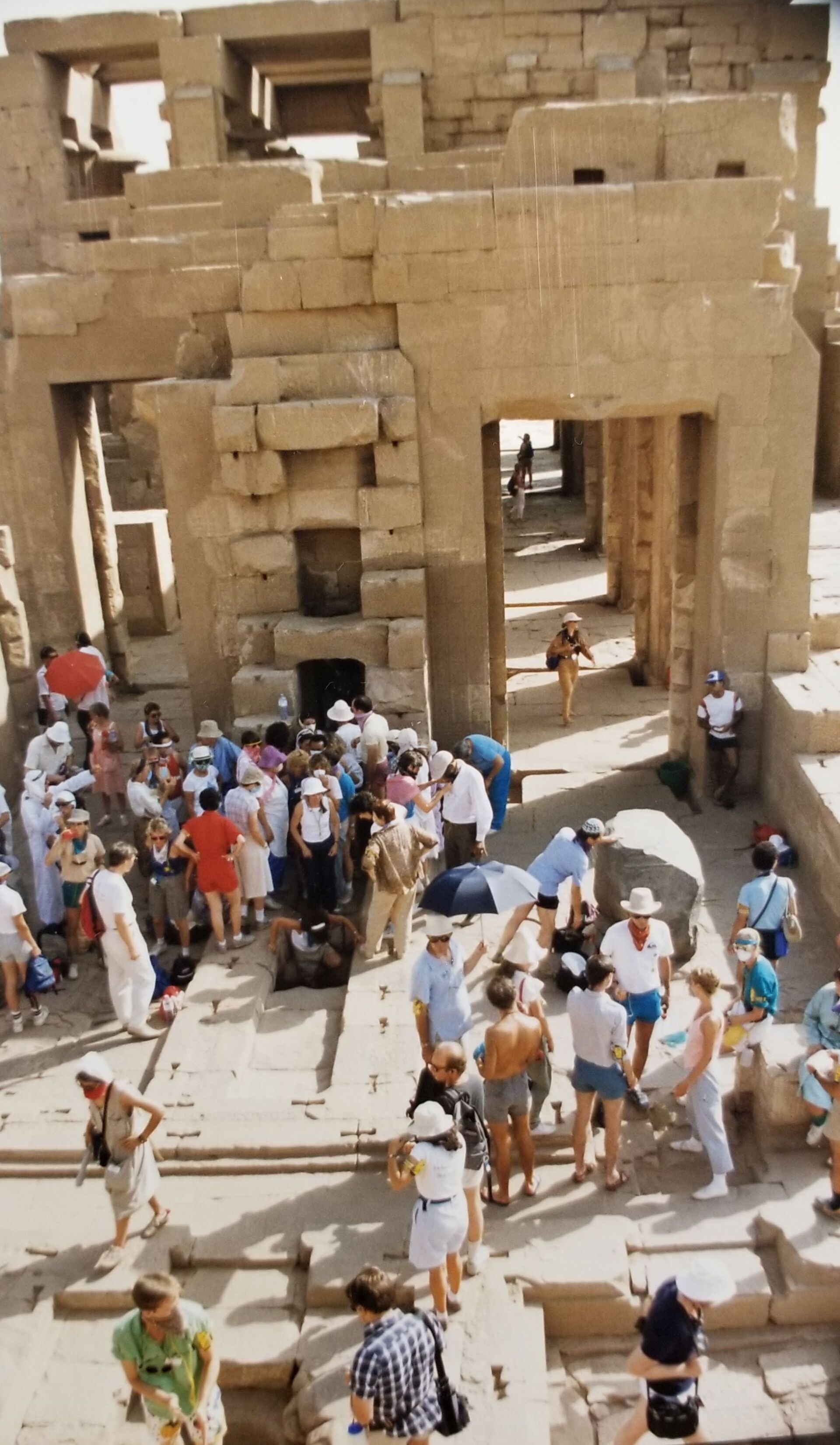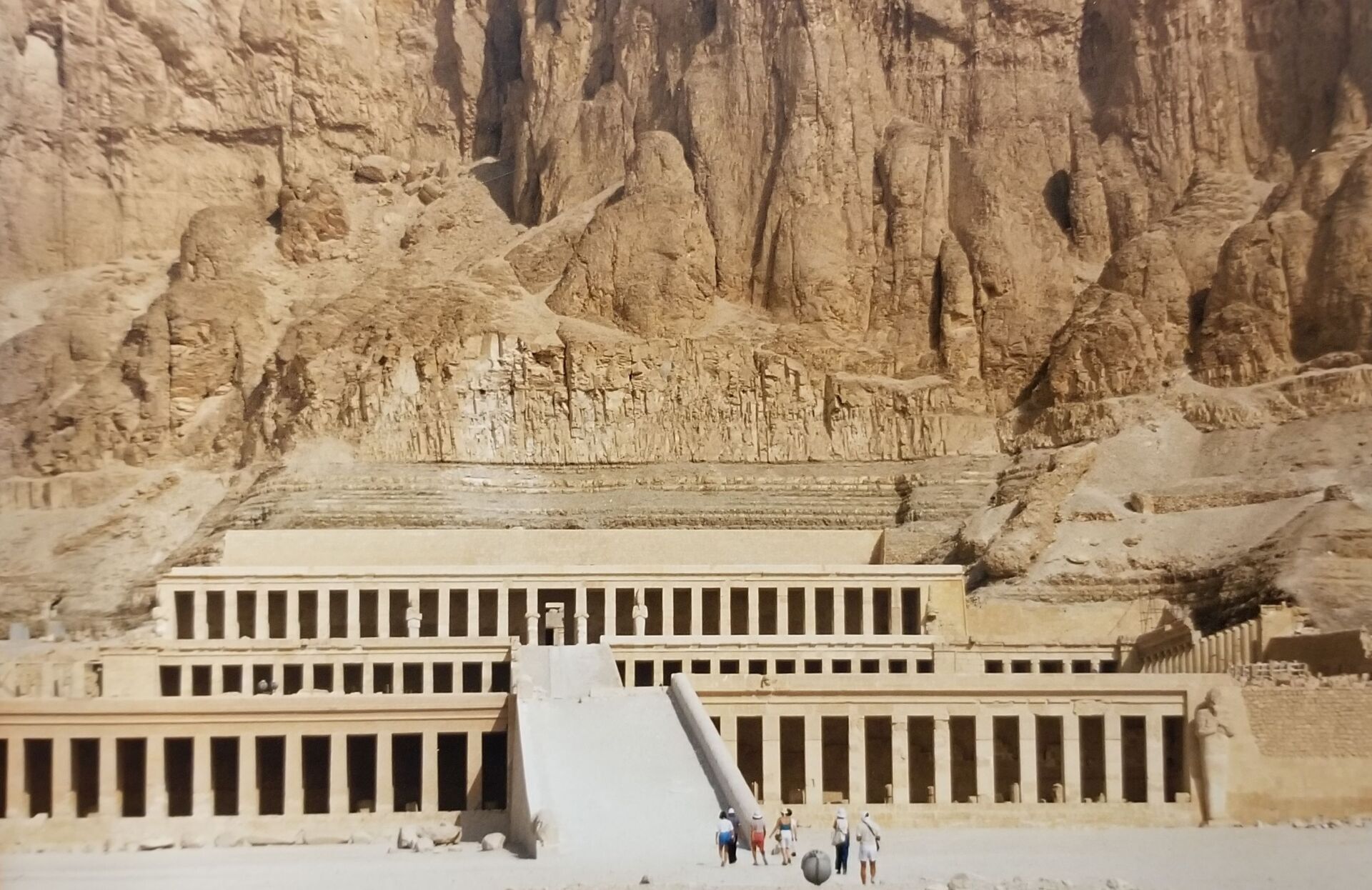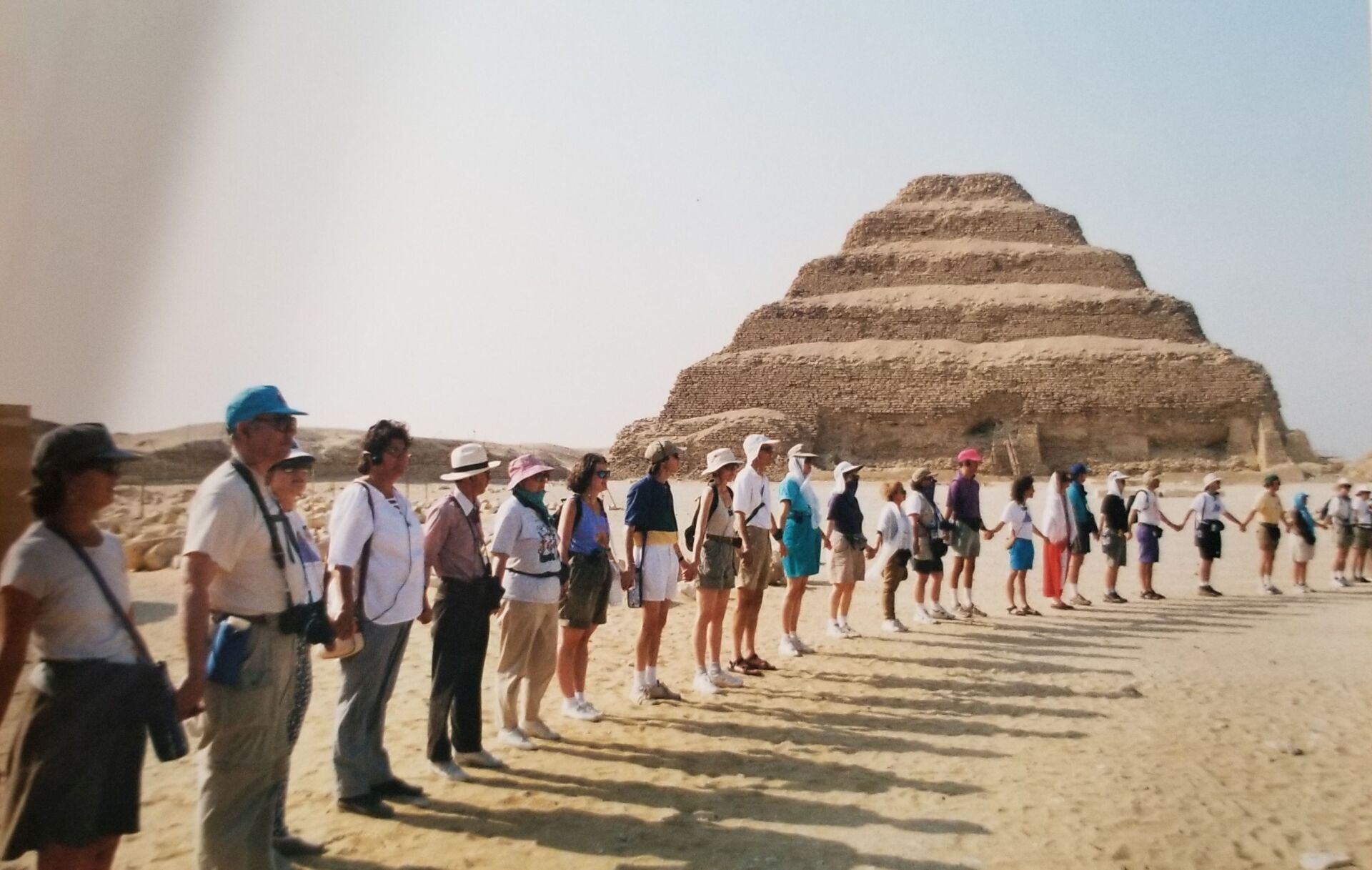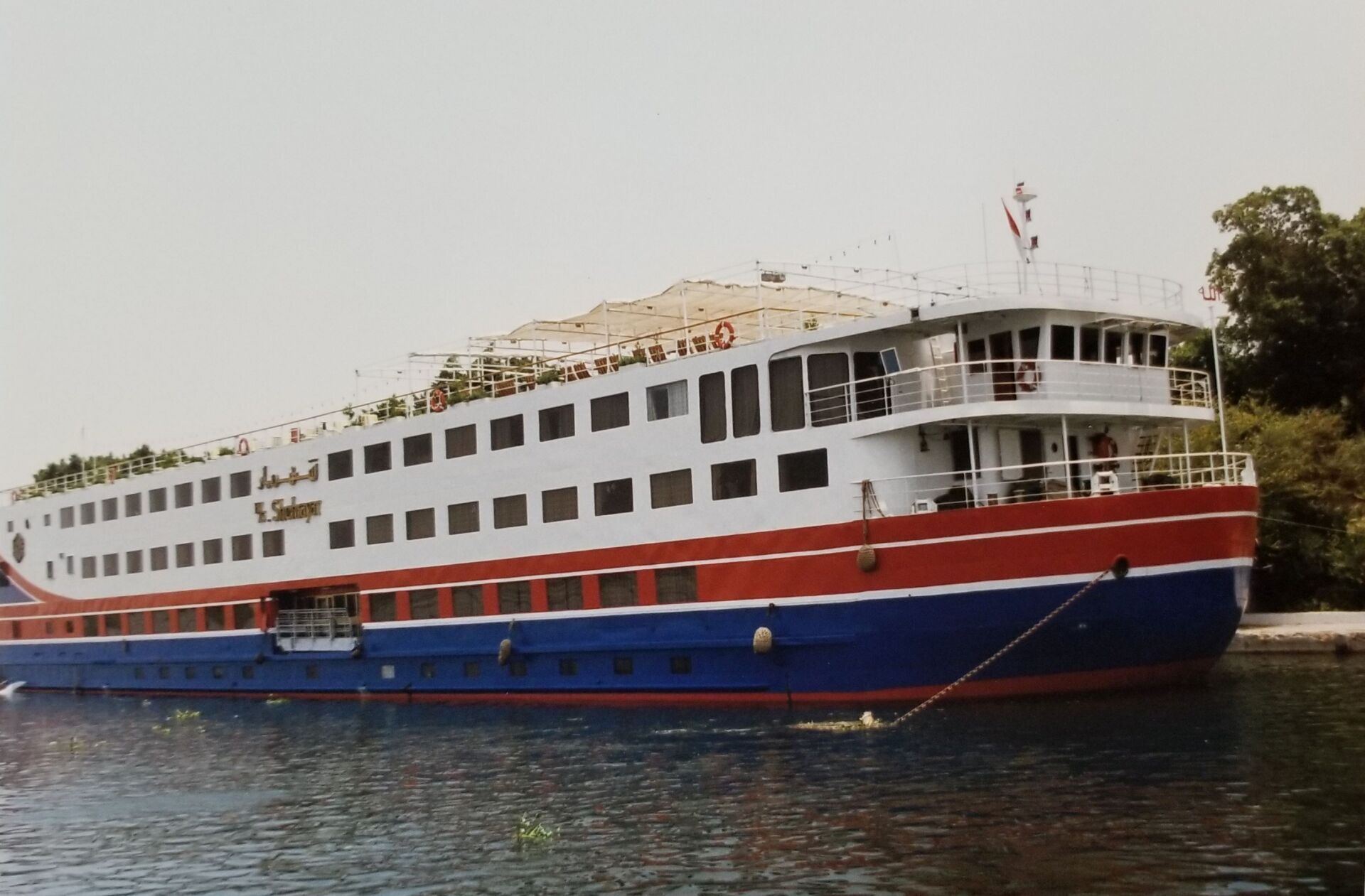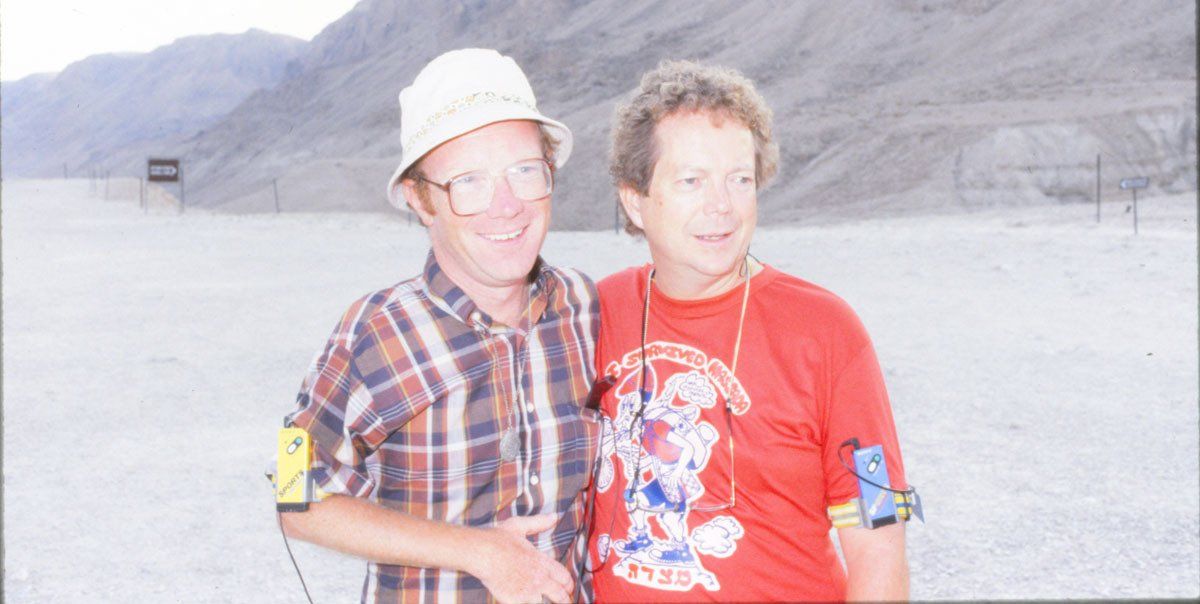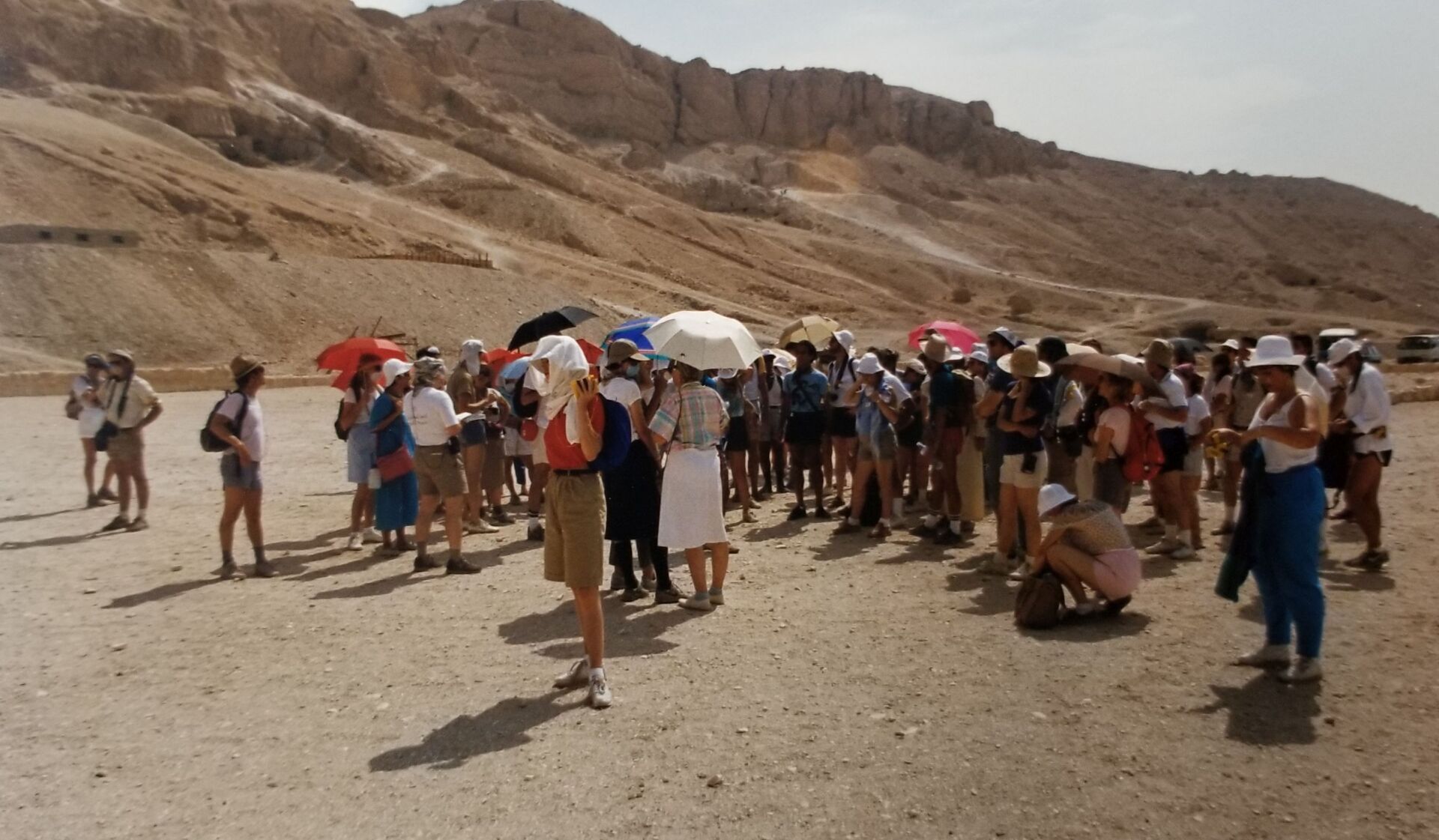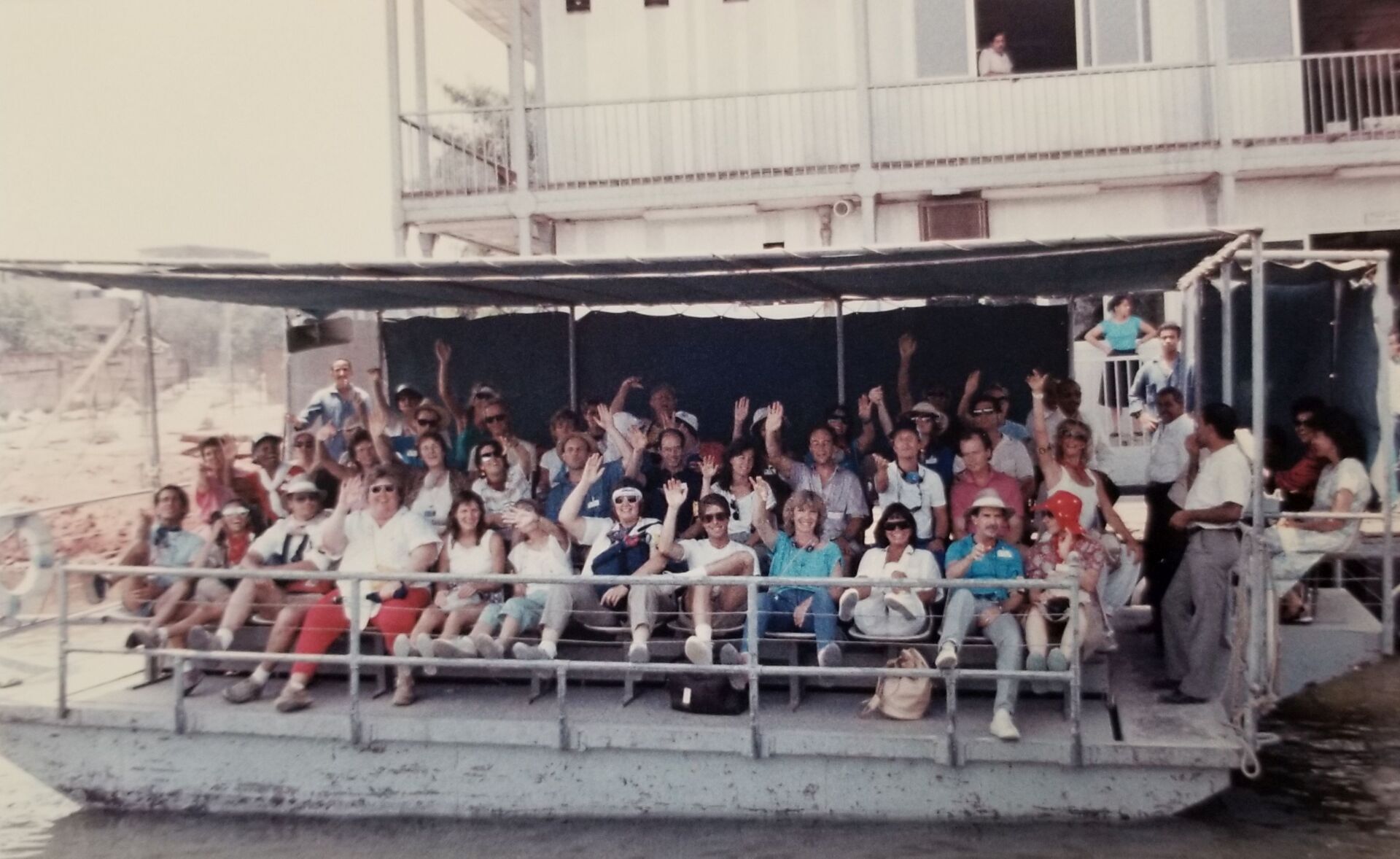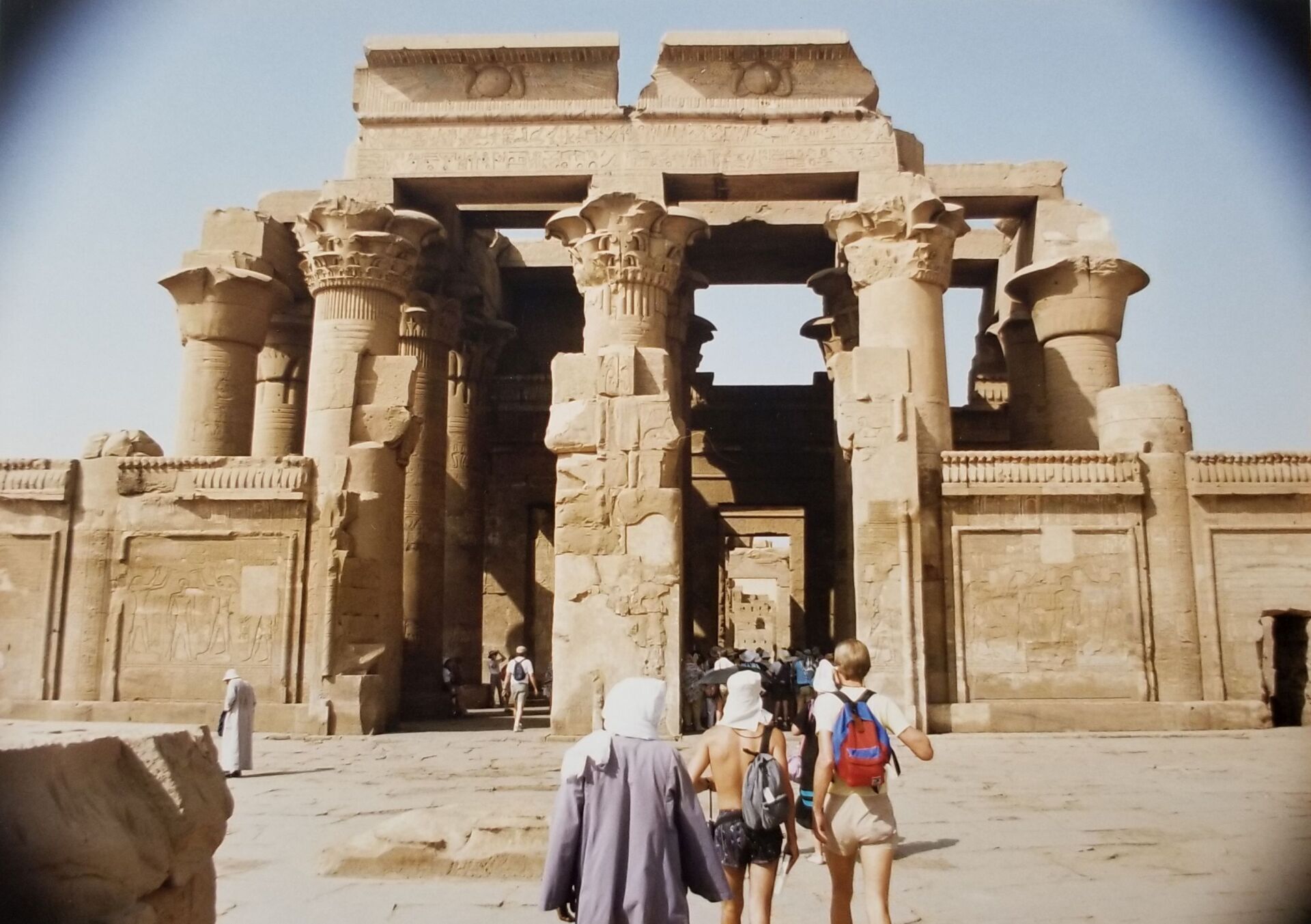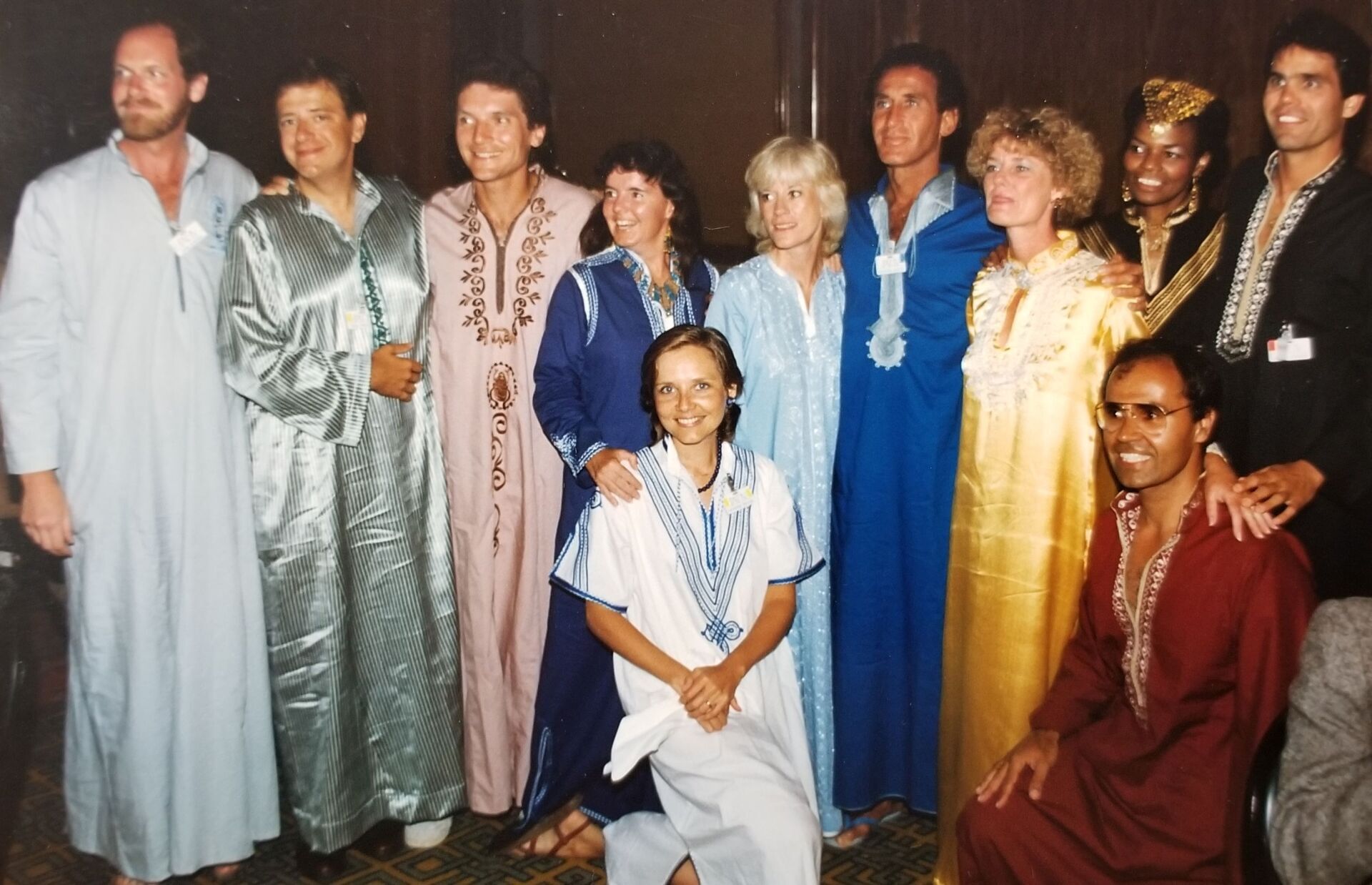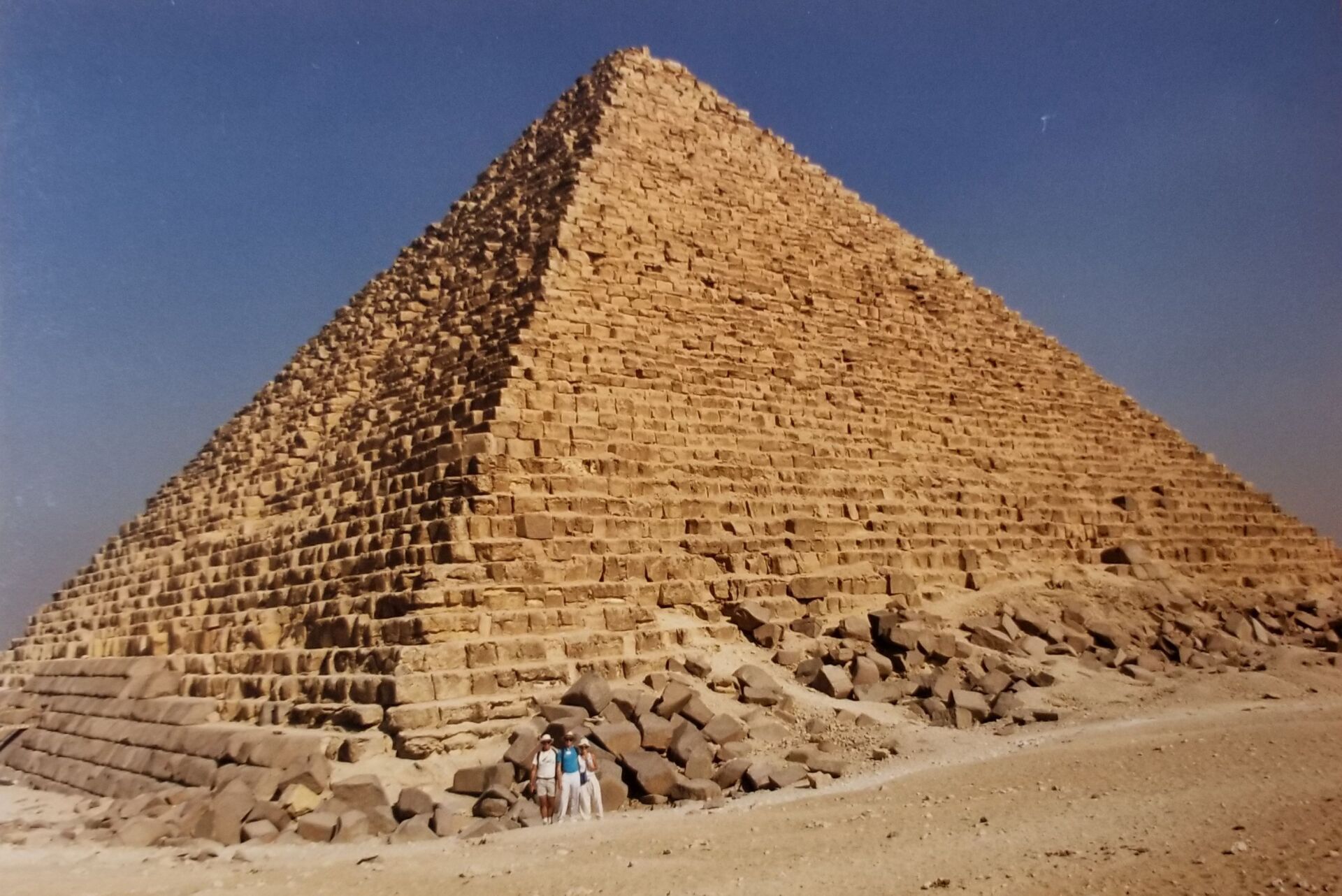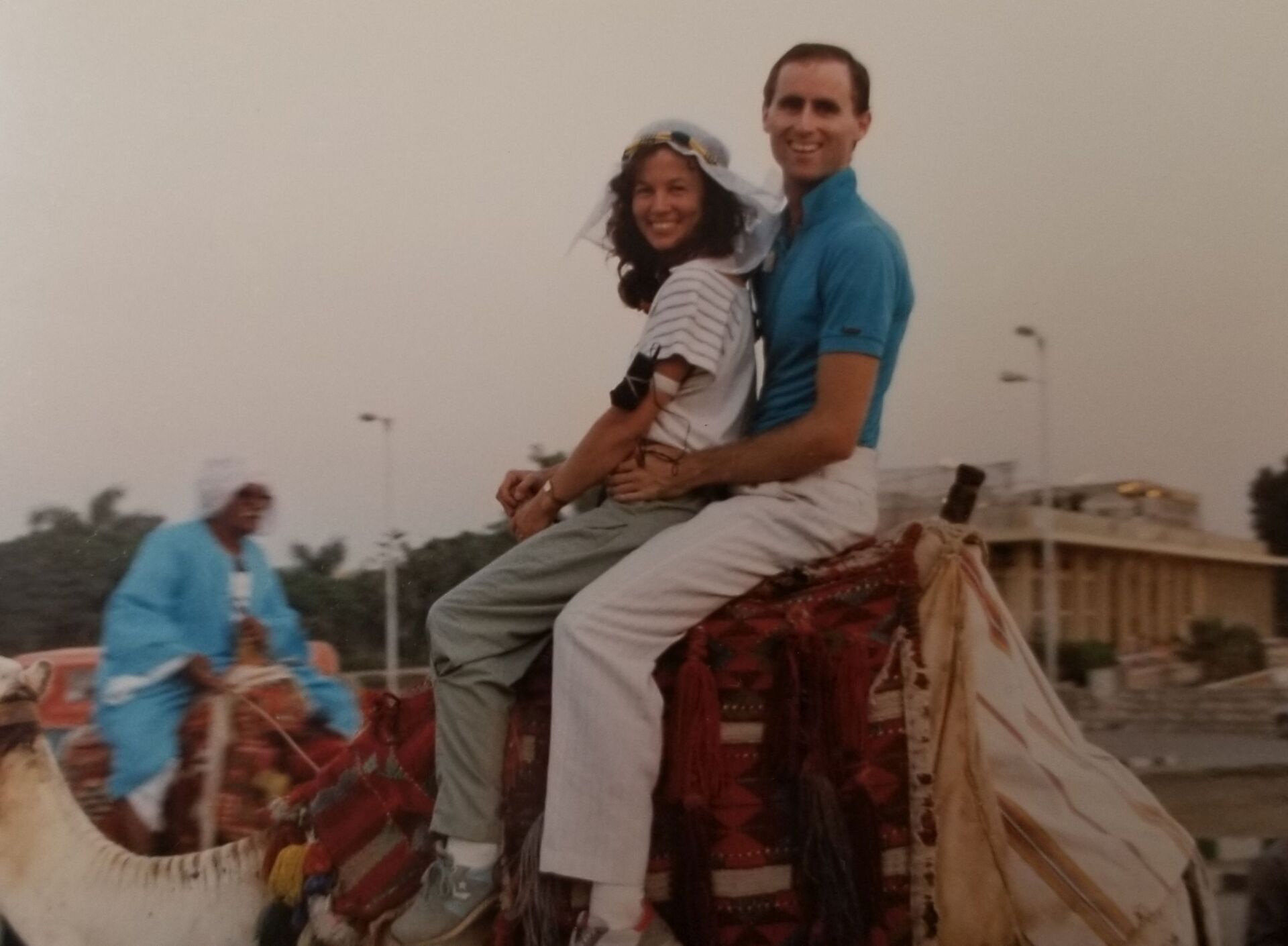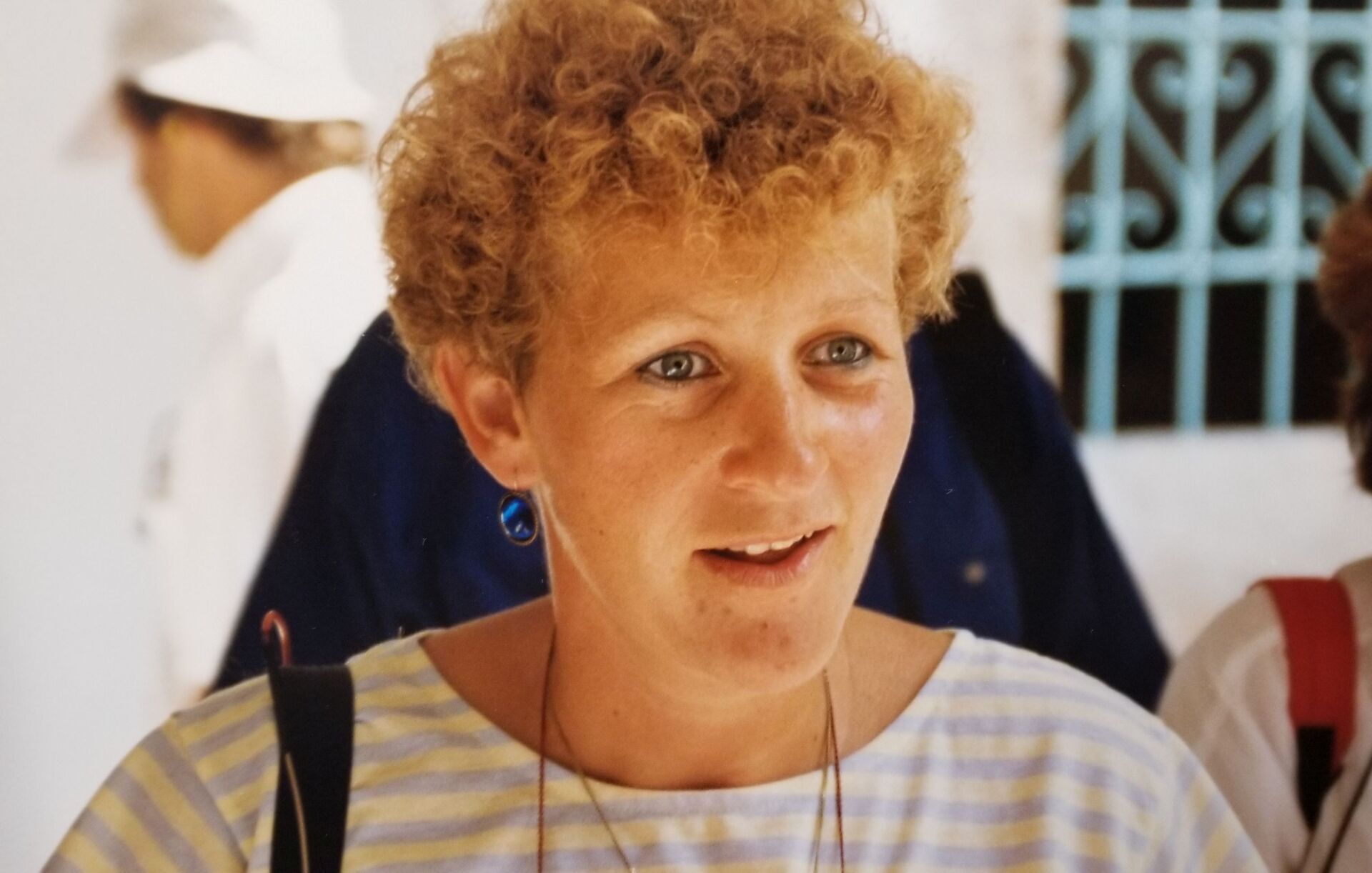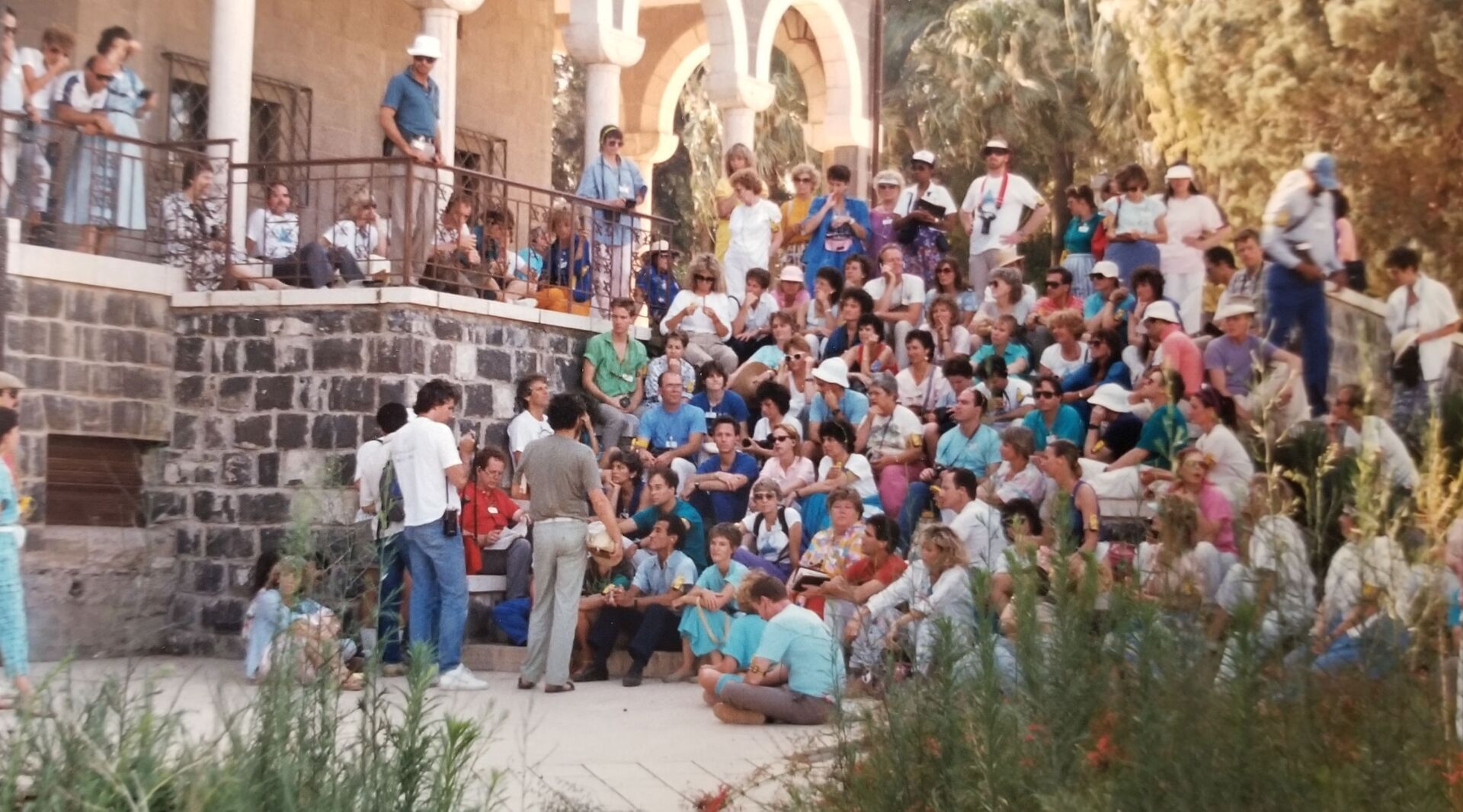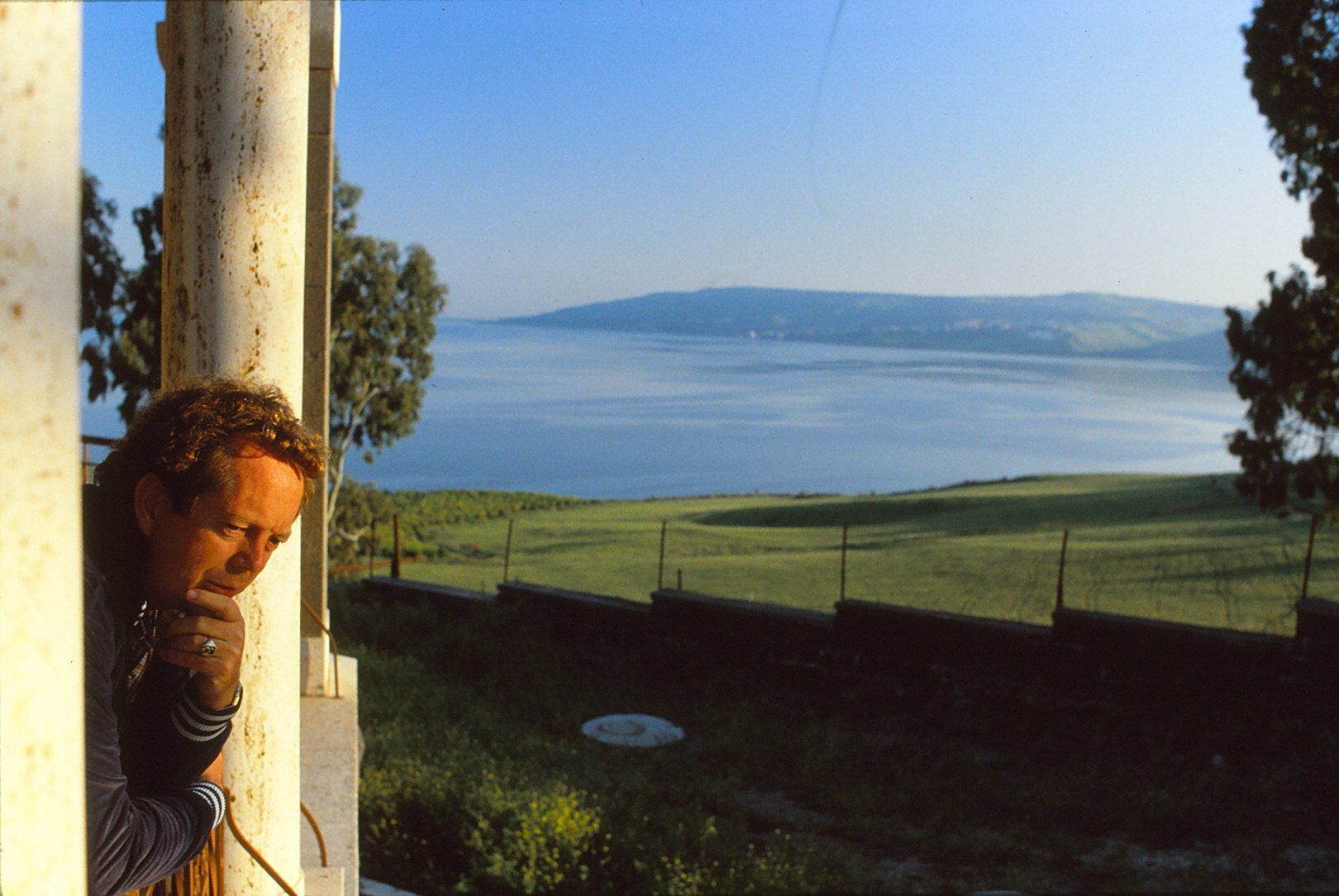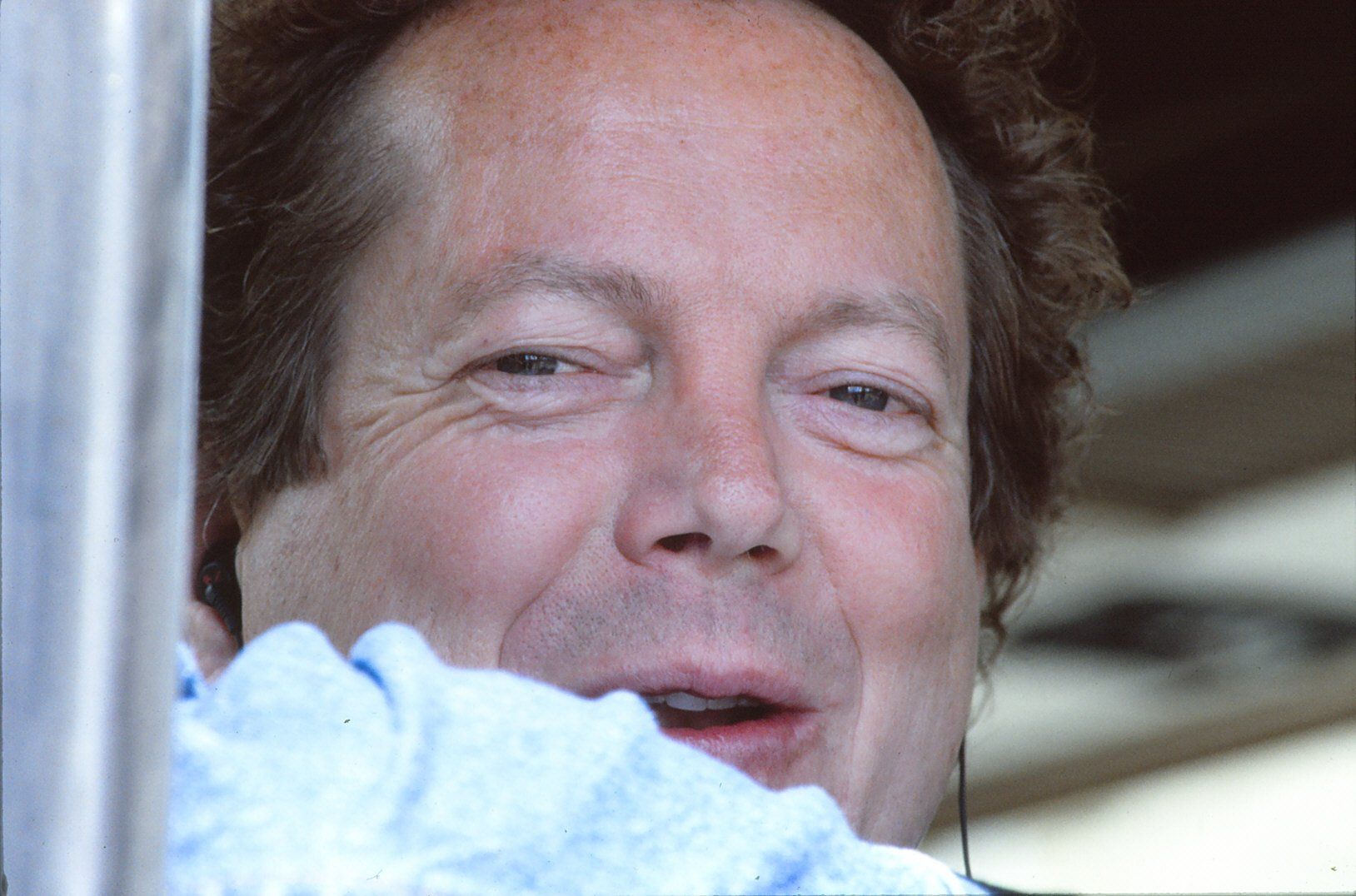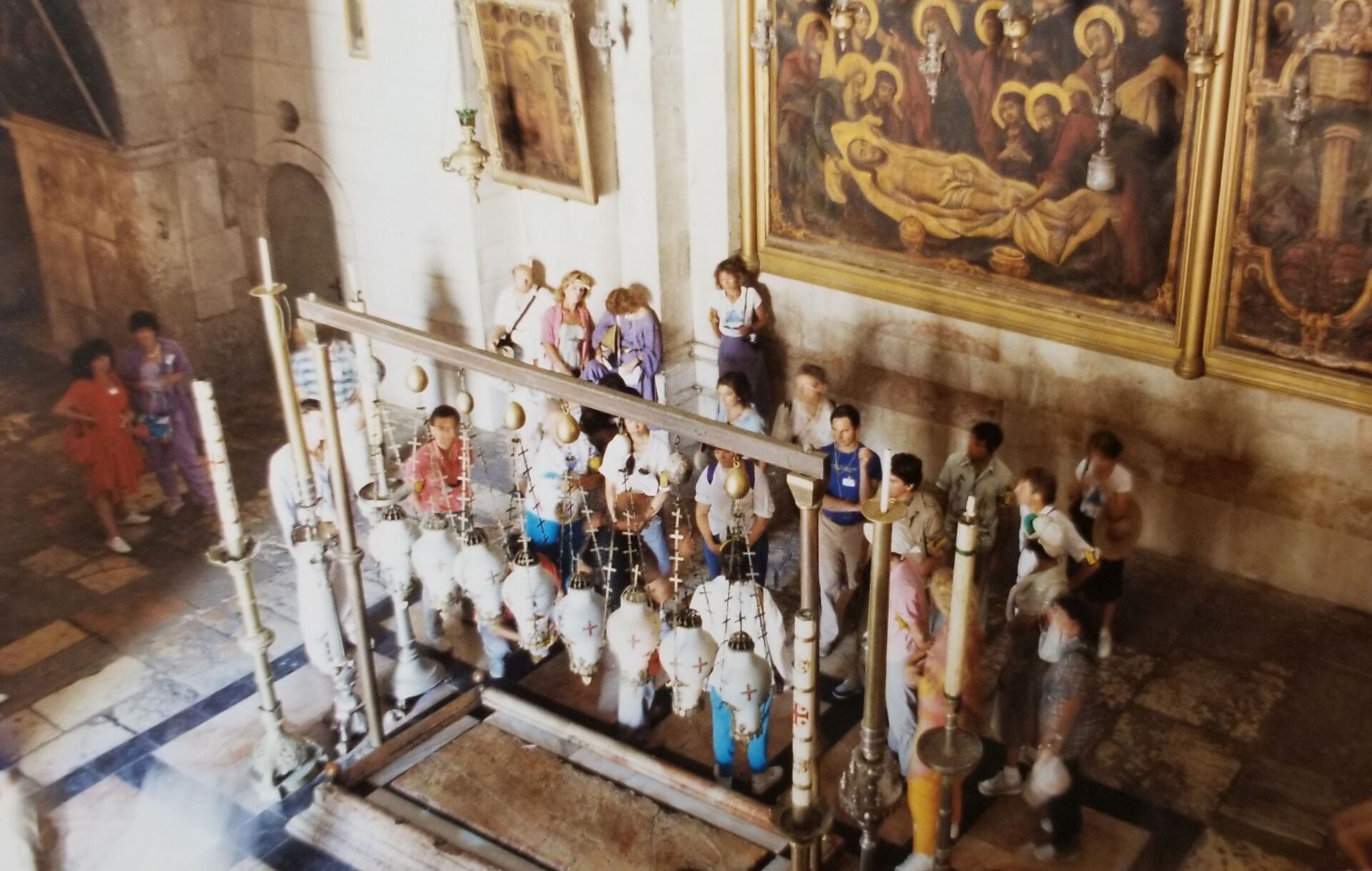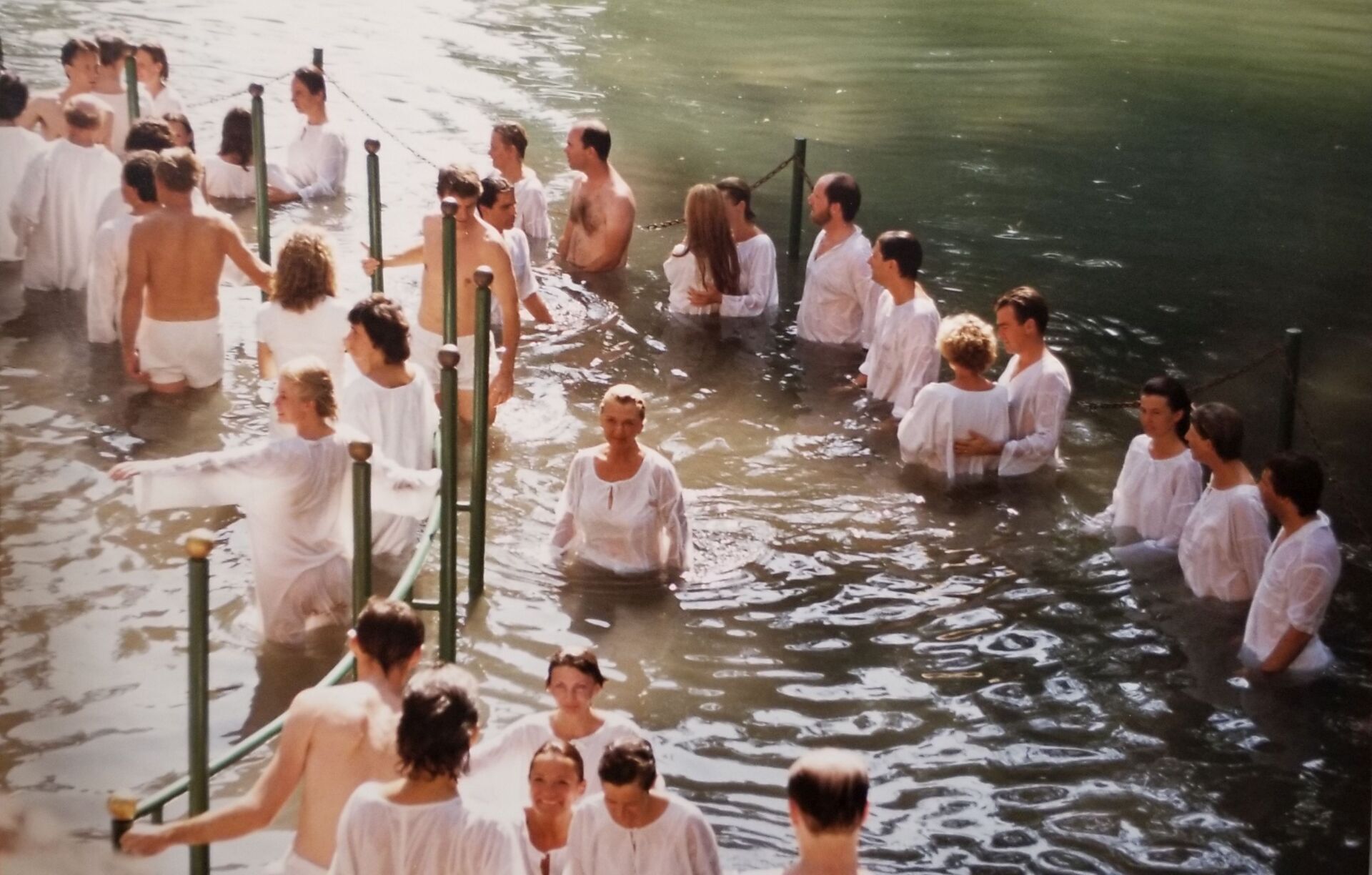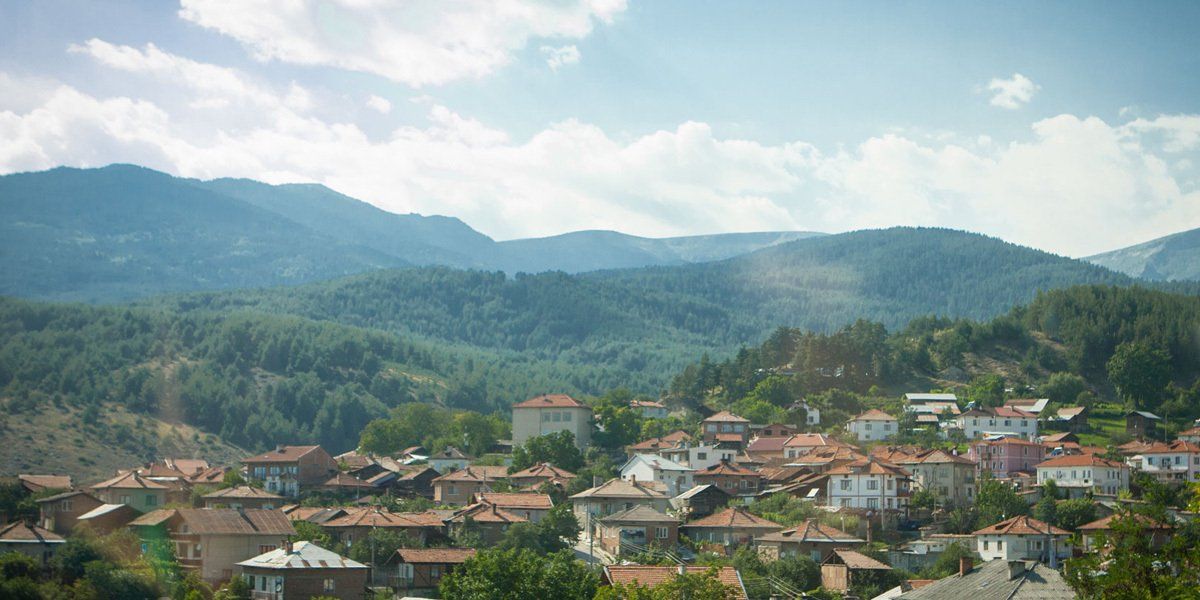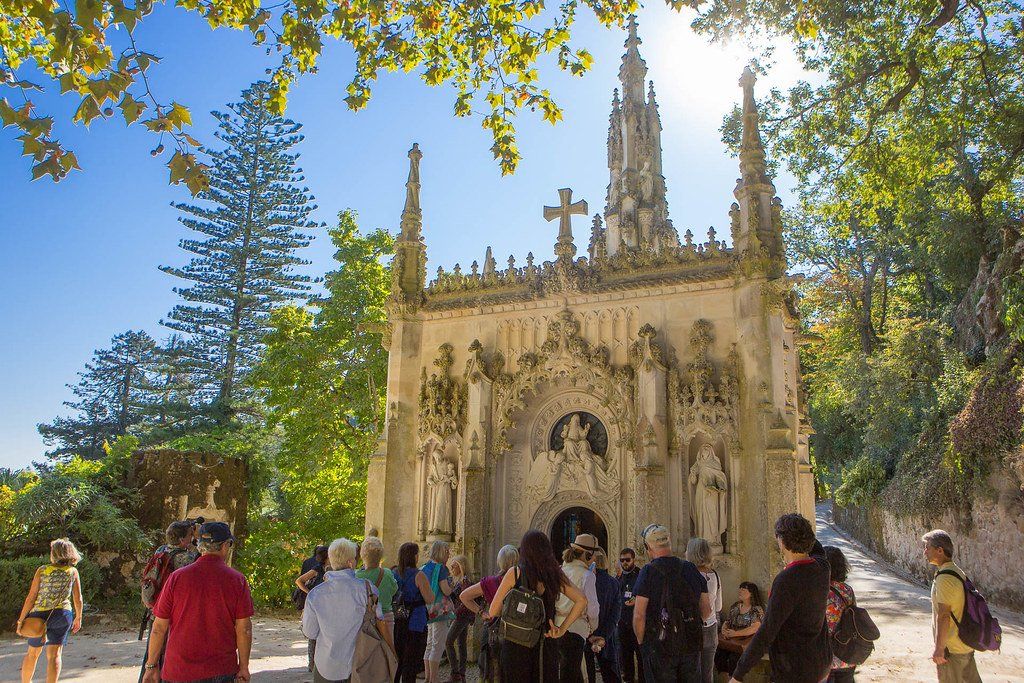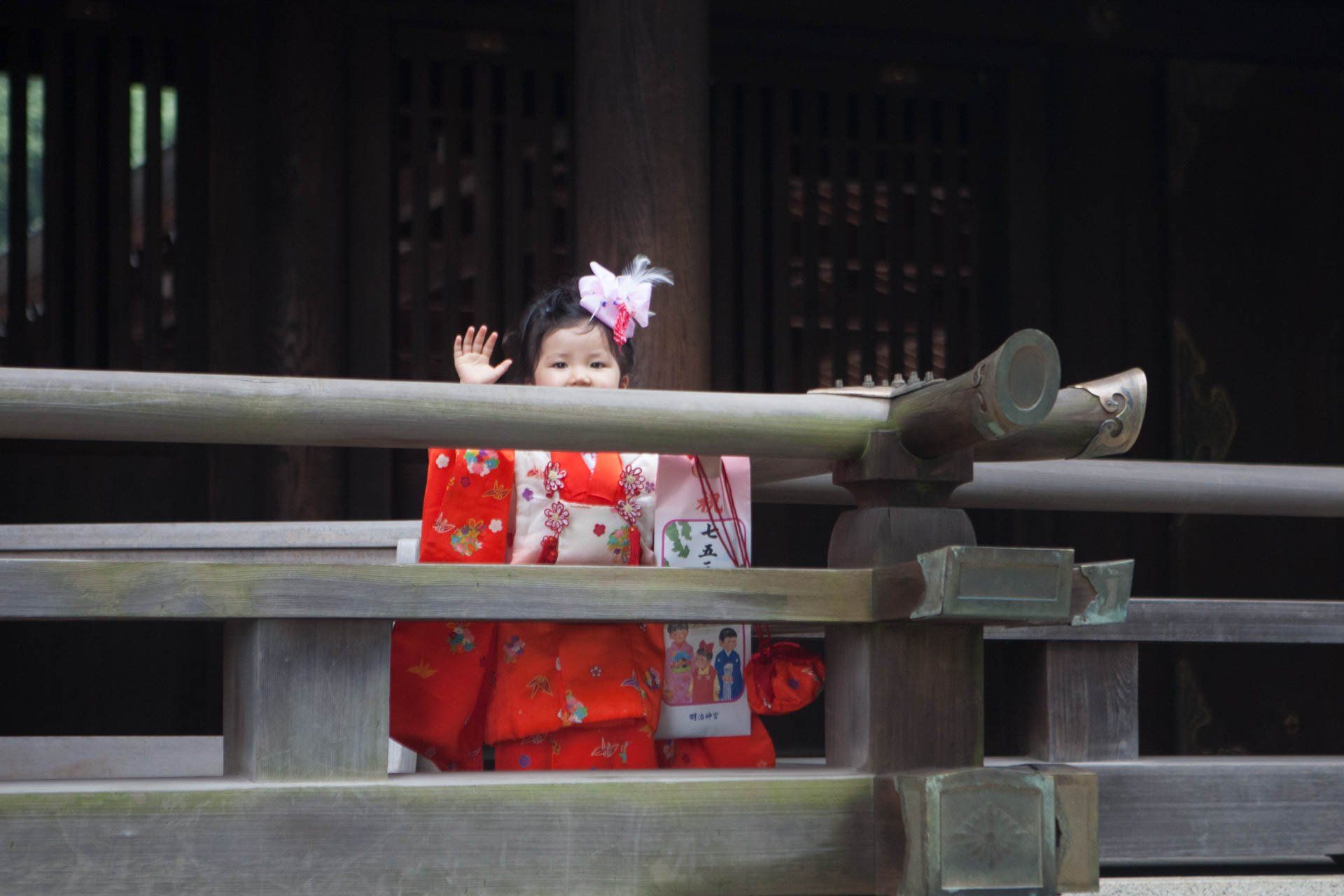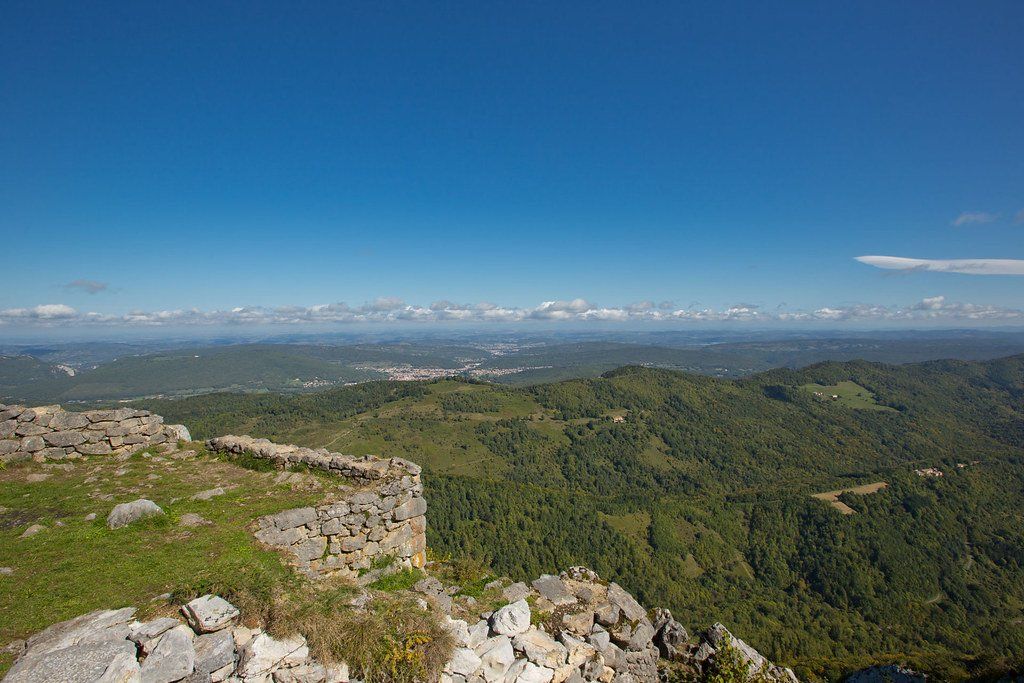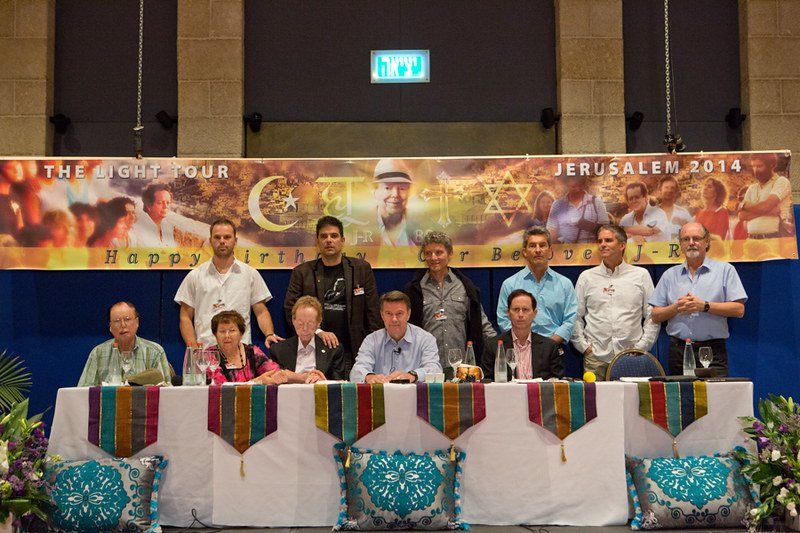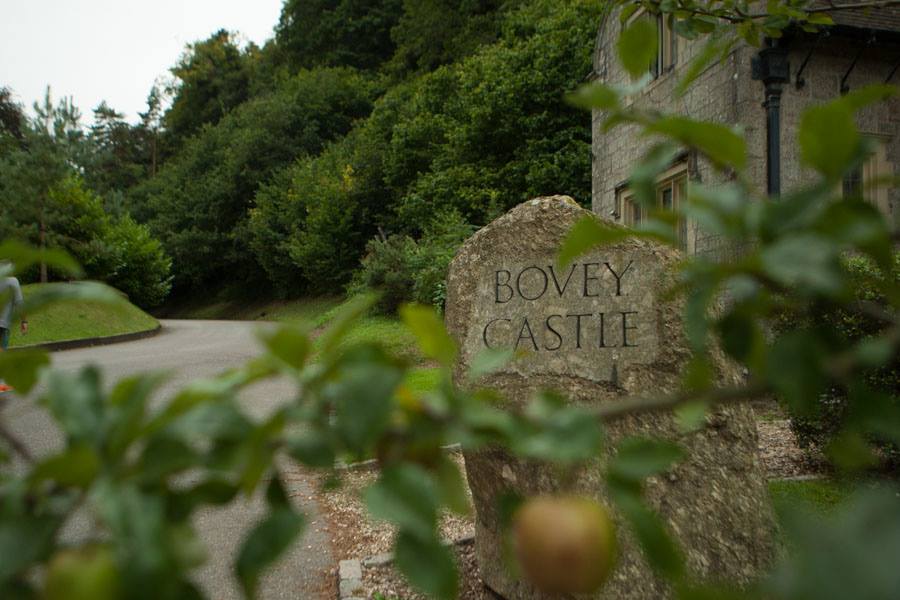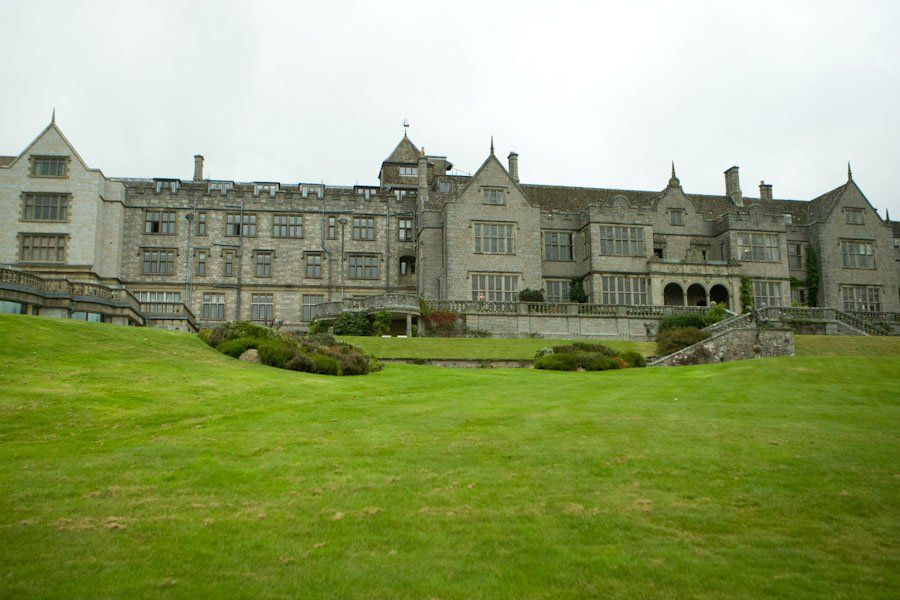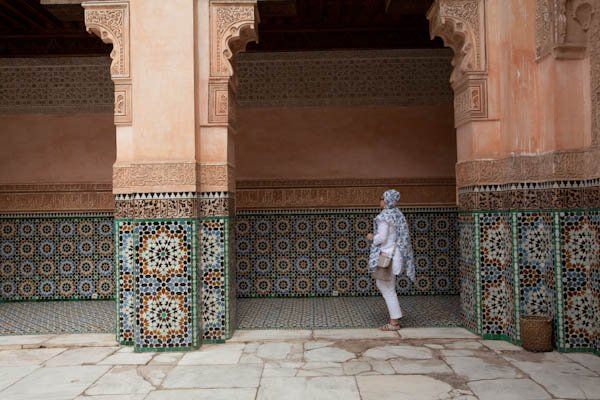PAT IV - Italy, Egypt and Israel - 1984
Oberammagau - Venice - Assissi - Florence - Rome - Cairo - Luxor - Nile River Cruise - Sinai - Nof Ginosar - Jerusalem
Dates: Summer 1984
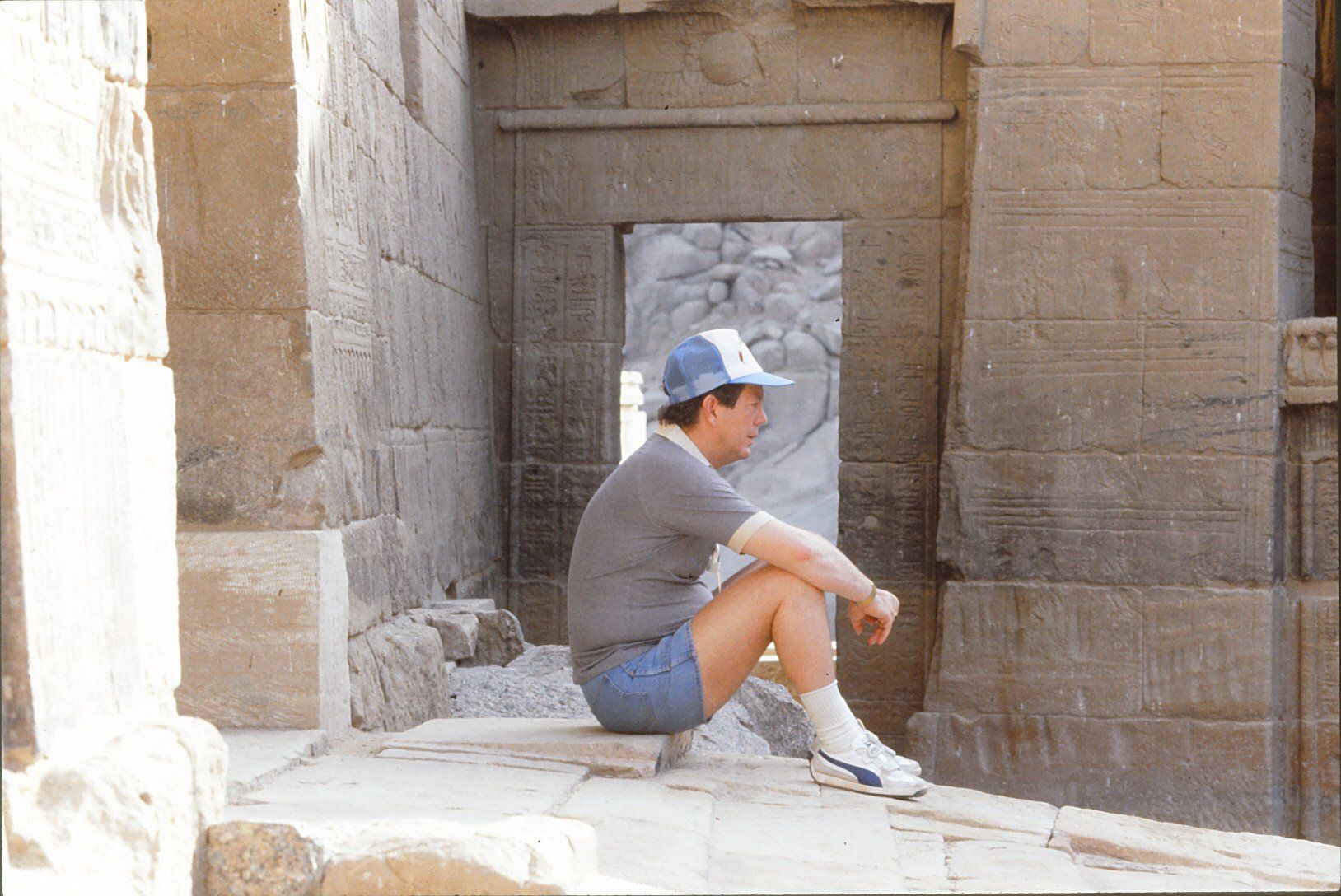
Here we are walking down the same corridors of time, walking the path of our own personal initiation...
From 1984 to 1995, John-Roger directed 9 remarkable month-long journeys through Egypt and Israel with groups of 150 people. These trips, called PAT IV and PAT V (Peace Awareness Training), were dream-come-true sojourns for many.
Daily Events
List of Services
-
Day 1 - Arrive GermanyList Item 1
Travelers arrive from all over the US and world to join the first PAT IV with JR.
Accommodations:
-
Day 2 - Oberammergau
The story of Christ - from His entry into Jerusalem to His crucifixion and resurrection - was first performed here in 1634, after the people of this tiny village of woodcarvers vowed to re-enact the suffering of Christ at 10-year intervals if they survived the ravages of the Black Plague. In 1710, the date was moved to the opening year of each decade. Several extra anniversary-year editions having offset losses to wars and secularizations, 1984's is the 38th production.
-
Day x - Venice Write a description for this list item and include information that will interest site visitors. For example, you may want to describe a team member's experience, what makes a product special, or a unique service that you offer.
-
Day x - Florence Write a description for this list item and include information that will interest site visitors. For example, you may want to describe a team member's experience, what makes a product special, or a unique service that you offer.
-
Day 4 - Assisi Write a description for this list item and include information that will interest site visitors. For example, you may want to describe a team member's experience, what makes a product special, or a unique service that you offer.
List Item 3 -
Day 6 - Assisi Write a description for this list item and include information that will interest site visitors. For example, you may want to describe a team member's experience, what makes a product special, or a unique service that you offer.
List Item 2 -
Day x - Arrive Cairo Write a description for this list item and include information that will interest site visitors. For example, you may want to describe a team member's experience, what makes a product special, or a unique service that you offer.
-
Day x - Exploring Egypt Write a description for this list item and include information that will interest site visitors. For example, you may want to describe a team member's experience, what makes a product special, or a unique service that you offer.
-
Day x - Sinai Peninsula Write a description for this list item and include information that will interest site visitors. For example, you may want to describe a team member's experience, what makes a product special, or a unique service that you offer.
-
Day - Jerusalem Write a description for this list item and include information that will interest site visitors. For example, you may want to describe a team member's experience, what makes a product special, or a unique service that you offer.
List Item 4 -
Day x - Masada and Dead Sea Write a description for this list item and include information that will interest site visitors. For example, you may want to describe a team member's experience, what makes a product special, or a unique service that you offer.
-
Day x - Sea of Galilee Write a description for this list item and include information that will interest site visitors. For example, you may want to describe a team member's experience, what makes a product special, or a unique service that you offer.
From Angel Harper:
My first PAT IV trip was in the summer of 1984. John-Roger with John Morton, as one of the trip’s staff, took along one hundred eight of us through a five week journey visiting Milan, Venice, Oberamagau, Assisi, Florence, Rome, then to Egypt and a 10 day trip up the Nile and then through the Sinai and into Israel. We took planes, trains, buses, camels, donkeys and walked. And it was hot, hot, hot. I remember standing in the six inches of shade by a wall in the Valley of the Kings and someone had an outdoor thermometer. It registered 120 degrees.
I’d never been to the Middle East and Egypt was this magical, mystical place that I’d only heard about and seen pictures of the pyramids and the Sphinx. I had no idea what I had signed up for when I got on the Air Alitalia flight that took me and eight others from the D.C. area to Milan, Italy and our first meet-up with the rest of the PAT IV group of people who came from all over the world. We stepped up into our buses (there were three labeled: BUS 1, BUS 2 and BUS 3). It was one sight, sound, taste, and smell after another. Experience, and let go, experience and let go. We practiced being Peacemakers, holding peace for ourselves, our fellow travelers, for the lands, and the peoples of the lands we visited.
The PAT IV kicked into high gear early on for me when our bus pulled into the parking lot at Assisi. Tears started rolling down my cheeks. I couldn’t stop them and I didn’t know why I was crying, I just was. Embarrassed with tears that were no longer controllable, I did my best to brush them away as we walked to our hotel. With only just enough time to put my hand-carry suitcase in my room and splash some water on my face, I picked up my FM radio, put on my headphones, and headed downstairs for a group meeting.
We were directed to walk as a group up to the Cathedral. By this time my tears were turning into sobs and shaking. I did my best to become as invisible as possible so I wouldn’t call attention to my unwanted display of emotion. As we walked up the hill I kept my head bowed and eyes down, feeling ashamed that I couldn’t control myself. After awhile I noticed there were these white oxford shoes and short socks keeping at a slow pace with me. Whoever it was didn’t seem to be bothered in the slightest that I was sobbing and sobbing, so I figured I must not be doing something too bad or this person would say something. I finally got enough courage to look at who belonged to the white shoes. It was J-R. He walked with me the whole way to the Cathedral, and by the time we got to the Cathedral door and met our loving guide, Father Max, the sobbing had melted into an occasional, gentle tear. That was my first experience of what I would call karma breaking loose for me on the trip and J-R masterfully holding ‘til I or someone else in the group made it through whatever needed to be cleared.
From Glen Barnett:
ST. FRANCIS
In 1984 during the first PAT IV trip to the Holy Land with John-Roger, we made a stop in Assisi Italy where, among other things, we took a tour of the Church of St. Francis. Leading our tour was a priest named Father Max who we would later come to love. This was his first experience with us. During the tour he would tell us a joke and was horrified (but delighted) when we laughed at it because of the sacred nature of the church where silent reverence was expected.
While showing us the murals on the walls we came to one which showed the Virgin Mary holding the baby Jesus. On one side of them was John the Beloved and on the other side was St. Francis. According to Father Max the story of the painting was that Jesus was asking Mary who loved him more John or Francis. Mary is depicted as pointing her thumb at St. Francis.
That same evening while walking about the town I came across J-R who was sitting and talking with his staff. I told him about this mural and what Father Max had told us. J-R replied, “St. Francis could afford to love Jesus more. He didn’t have to put up with his bad moods or smell his farts.” It was another example of J-R’s practical wisdom.
....
ROMAN BATHS
In the late 70’s I began to write a novel about a Roman soldier who witnessed the crucifixion of Jesus. At one point I marched my legionnaire to the top of the desert rock in Judea known as Masada. He was to do garrison duty there. I thought what would he do all day on that hot skillet of a rock? Well, I thought, he would keep himself immersed in water as much as possible, like a Roman bath. I decided where the best place for the bath would be and wrote it down.
Then when we took our first trip to the Holy Land on PAT IV, while in Israel, we climbed to the top of Masada. As part of our tour we were shown the remains of a mosaic which our guide told us was the remains of a Roman bath. I was so excited that I turned to tell the person behind me what I had written. Well, as it turned out the person behind me was J-R. So I told him what I had written and here it was. Then I said, “But in my book I wrote that the bath would be over there,” and I pointed in a northerly direction. J-R said, “Why don’t you go over there and look.” So I did and exactly where I had written that it would be, was another Roman bath.
BAPTISM
When we were in Israel, J-R told us that there would be an opportunity for anyone who wanted it to be baptized in the Jordan River. Of course we all wanted to do this. He told us that he would not baptize any of us himself but that members of his staff would do the baptisms. He explained that if he baptized one person then everyone else would want him to baptize them as well.
One night in my room by the Sea of Galilee I opened my Bible and looked to see what it had to say about baptism. I came across John: 4:2 which says, “in fact it was not Jesus who baptized, but his disciples.” The verse became immediately clear to me. Of course Jesus did not baptize because if he did everyone else would want him to baptize them as well. J-R had given the Bible flesh and blood.
New Day Herald Article by Glenn Barnett:
Jerusalem has been one of the most fought over cities on earth. Some of its seventeen conquerors have included Egypt, Assyria, Babylon, Persia, Greece, Rome, Arabia, turkey, Great Britain and Israel. Thousands of people have died conquering or defending its holy ground. Jews, Christians and Moslems from most nations on the planet have spilled their blood here—what’s so holy about that?
Last summer I made a pilgrimage, with other students and ministers from the Prana Theological Seminary, to this crucible of human frailty. I recognized why men continue to revere this special part of the world. However, the first stop on our journey to the Holy Land was not Jerusalem; we began in the Bavarian mountains of Germany. Once every decade for the past 350 years the local villagers of Oberammergau have been performing the passion play of Jesus. This tradition depicts sacred events which occurred in Judea 2,000 years ago.
After witnessing this timeless drama we traveled south to Italy. Our first stop was Venice, a city which prospered in the middle ages by supporting the Christian Crusaders in their efforts to occupy Palestine. The Crusaders eventually failed, but Venice flourished by controlling the trade routes to the Easter Mediterranean.
We continued on to Florence where resides Michelangelo’s famous marble statue of the young David, who became a king of Judah 3,000 years ago. Several lovely churches in Florence worship a descendent of King David, who lived in Judah and, like David, was born in Bethlehem and died in Jerusalem.
From Florence our road led to Rome; the ironic capitol of “Christendom” which fought so long to suppress the “Judean heresy” before embracing it as here and most of it is dedicated to events and people associated with Jesus’ ministry in Judea.
I found the humble, hillside town of Assisi the most beautiful of all Italy. Much of this medieval village remains as it was in the early 12th century when St. Francis spent his life emulating the suffering of his “brother” who was crucified in Jerusalem. It became apparent that much of the mystique of the Holy Land is the reverence placed on it by other people throughout the world.
Having “done” Italy our trip progressed to Egypt. In this ancient land we saw the usual: museums, pyramids, camels and temples. However, we were also shown sites of Biblical significance. First we visited the traditional site where the baby Moses was found in the reeds—now an underground grotto encased in cobweb-infested stone blocks. In Cairo stood the Coptic Christian church which was reputed to be the location where Mary and Joseph hid their child from the wrath of King Herod. We visited another church where parishioners had recently seen the apparition of the Virgin Mary. Dozens of people were camped outside the church demonstrating their devotion and awaiting her return.
South of Cairo along the Nile stands a series of ancient temples. These ageless citadels were the center of Egyptian religious life for centuries. Their ornately carved hieroglyphs and cryptic symbols reveal stories of powerful kings and mighty deeds. Perhaps there lie hidden meaning within the symbols meant only for those with ‘eyes to see and ears to hear.” One theory contends that these temples were once important centers of spiritual initiation and that Jesus spent some of his “lost” years here.
Between the Nile and the modern state of Israel lies a barren and forbidding Peninsula called Sinai. Quite literally in the middle of nowhere stands an incongruous walled monastery where for 1,300 years Greek Christians have commemorated the formulation of Jewish law in a Moslem country. We spent an afternoon hiking the grounds where Moses received the Ten Commandments.
We then proceeded to Israel. It was the final stop and the focal point of our pilgrimage, as well as for many of the people we had met along the way. We were shown the abundance of Christian holy places, but our Israeli guides demonstrated their love for this land as well.
From the time of Solomon in 900 BC, the holiest site of the Jews has been the Temple at Jerusalem. When this was destroyed by the Romans in 70AD, a small surviving portion of the Temple ground’s retaining wall became the object of reverence for the Jews – the Wailing, or Western wall. In 135AD, after an unsuccessful revolt against the Roman overlords, the Jews were evicted from Jerusalem and forbidden to return. Although they were scattered throughout the world in what was called the diaspora, their determination to return to their homeland was reawakened in the celebration of Passover. For 2,000 years the ceremony has been concluded with the prayer “next year in Jerusalem.” In 1967 the Israeli army fulfilled this longing by restoring to the Jews their holy city.
The Israelis are proud of their role in reviving a once barren land, which now blooms with trees and farmlands. They have reclaimed their ancient land of milk and honey. Jews from around the world make their home in this Jerusalem, bringing their languages and cultures with them. This land is sacred to the Jews, the one place on earth where they govern as a majority.
We saw the Armenian quarter of the city. A community of ethnic Christians who, like the Jews of old or the Palestinians of today, are a people without a nation. Jerusalem substitutes as their holy city. Palestine, however, is not a two-dimensional (Jewish and Christian) culture. When I was in Jerusalem, I looked up the father of an Arab man I know in Los Angeles. His father is a prominent man in Moslem Jerusalem and a generous host. He invited me to dinner in his home and took me up on the roof of his house in the old city. From there he showed me the Holy Land his ancestors have lived in for a thousand years. “Look,” he said pointed proudly, “The Mosque of Omar (Dome of the Rock), the Alaqsa Mosque Mt. Scopus—beautiful.” His halting English did not restrict his expression of love for the city of his birth.
I was able to see these Islamic holy sites in a different light than I had as a casual tourist. In the twinkling panorama of city lights I recognized my Christian background. However, along with the Mount of Olives, the Garden of Gethsemane and the Church of the Holy Sepulchre, I saw the Western Wall and the Hebrew University.
The Holy Land’s heart is Jerusalem. The devout of the world’s three monotheistic religions come to visit or live here. The tradition-bound “Old City” is a tourist’s delight, where sites and shrines are steeped in 3,000 years of religious controversy. As I walked the narrow cobblestone streets paving this living monument to history, it dawned on me that these buildings—built and rebuilt from the same stone blocks—reflected attitudes frozen in time.
At the time of Jesus the city and surrounding countryside were controlled by the Roman authority. The Holy Temple site was controlled by the Jews. Today, the city and the countryside are ruled by the Israelis, while the Temple is under the authority of the Moslems. I saw Israeli soldiers patrolling the streets in their green combat fatigues carrying rifles. My mind’s eye saw them dressed in scarlet Roman cloaks with spears and broad swords in hand. Once again the conquerors and the vanquished are living side by side in Jerusalem holding similar attitudes toward each other.
The holiness of this multi-cultural, multi-linguistic, multi-religious city transcends the political and military situation. The complexion continues to change, but Jerusalem remains the holy city. In the fourth century Saint Augustine wrote in his book “City of God,” “Two loves had built two cities—love of God makes Jerusalem and love of the world makes Babylon. Let each question himself as to what he loves, and he shall find of which he is a citizen.”
Group Photo
